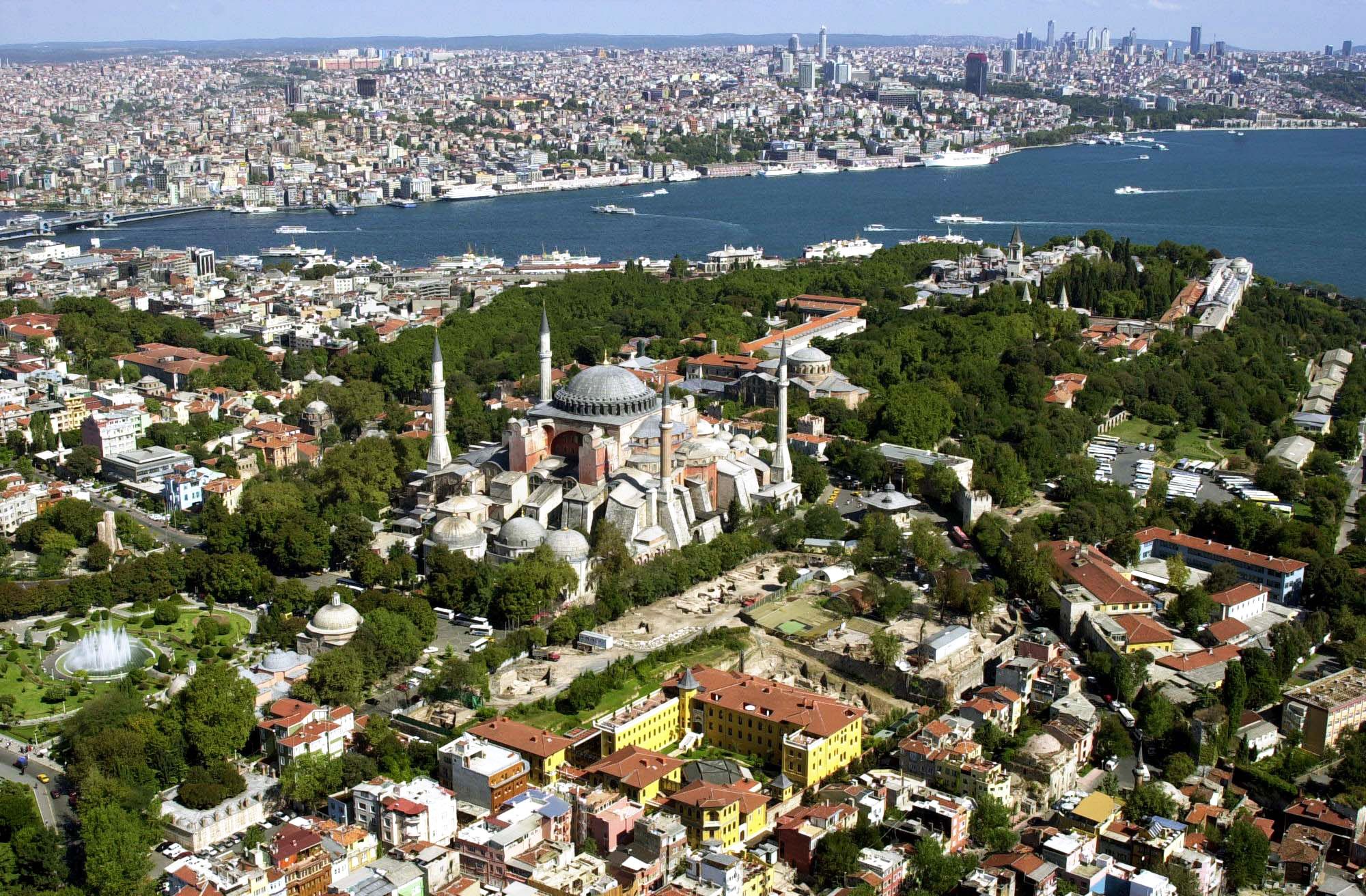
漢德百科全書 | 汉德百科全书
 Eurovision Song Contest,ESC
Eurovision Song Contest,ESC
 Estonia
Estonia
 Eurovision Song Contest,ESC
Eurovision Song Contest,ESC

 International cities
International cities
 *European Capital of Culture
*European Capital of Culture

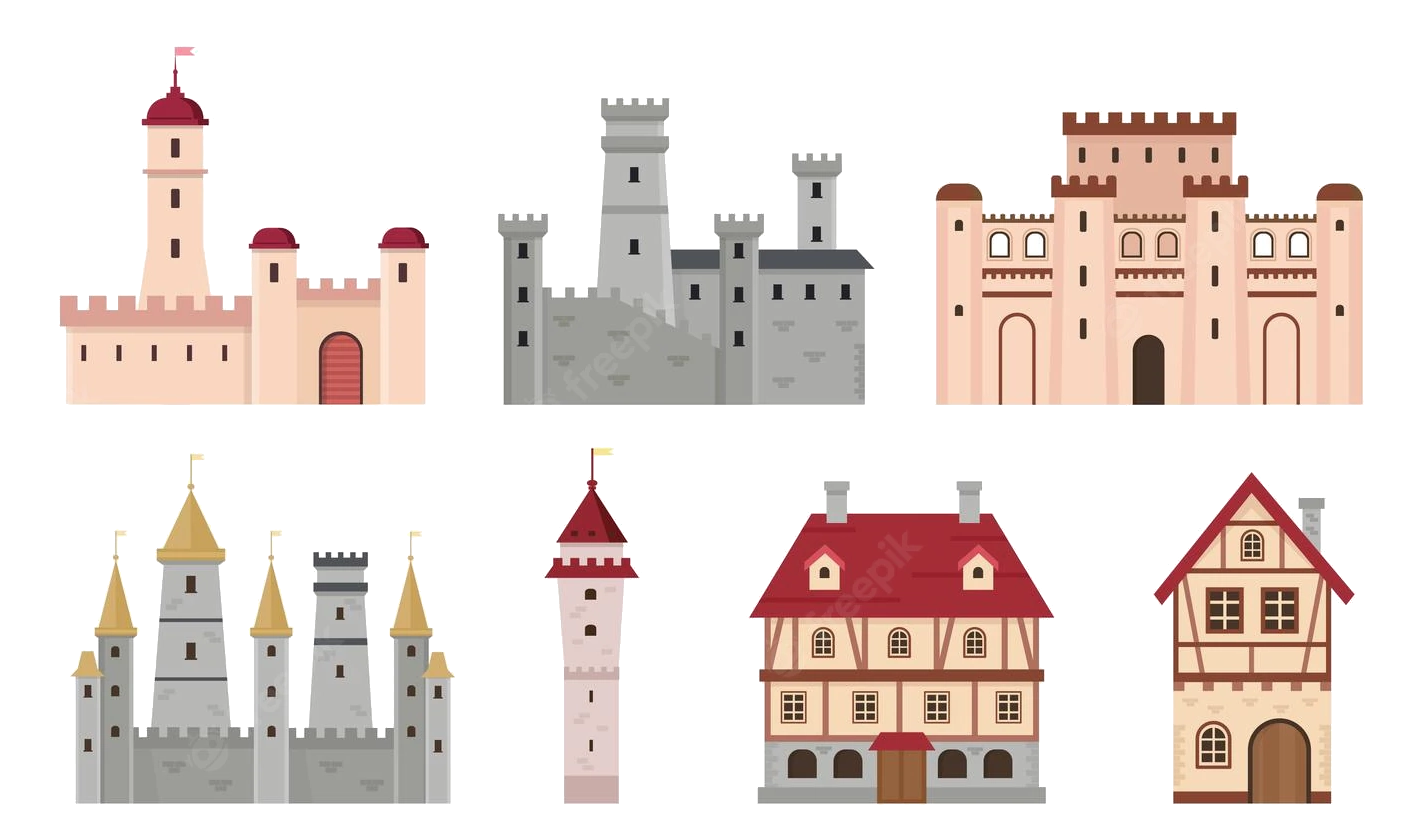 Medieval cities in Europe
Medieval cities in Europe
 Silk road
Silk road

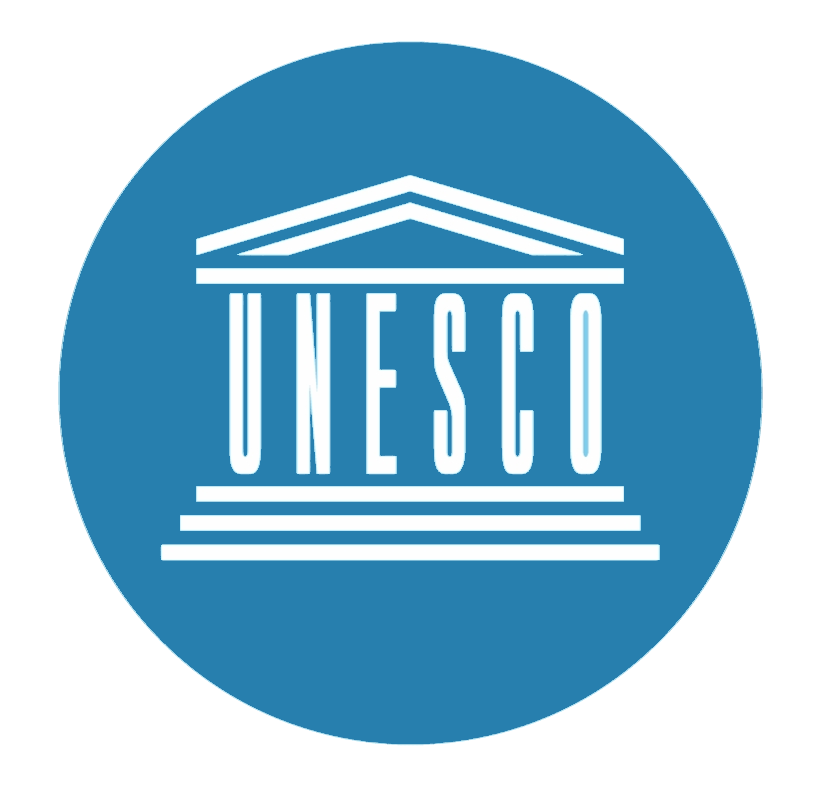 World Heritage
World Heritage

 Important port
Important port
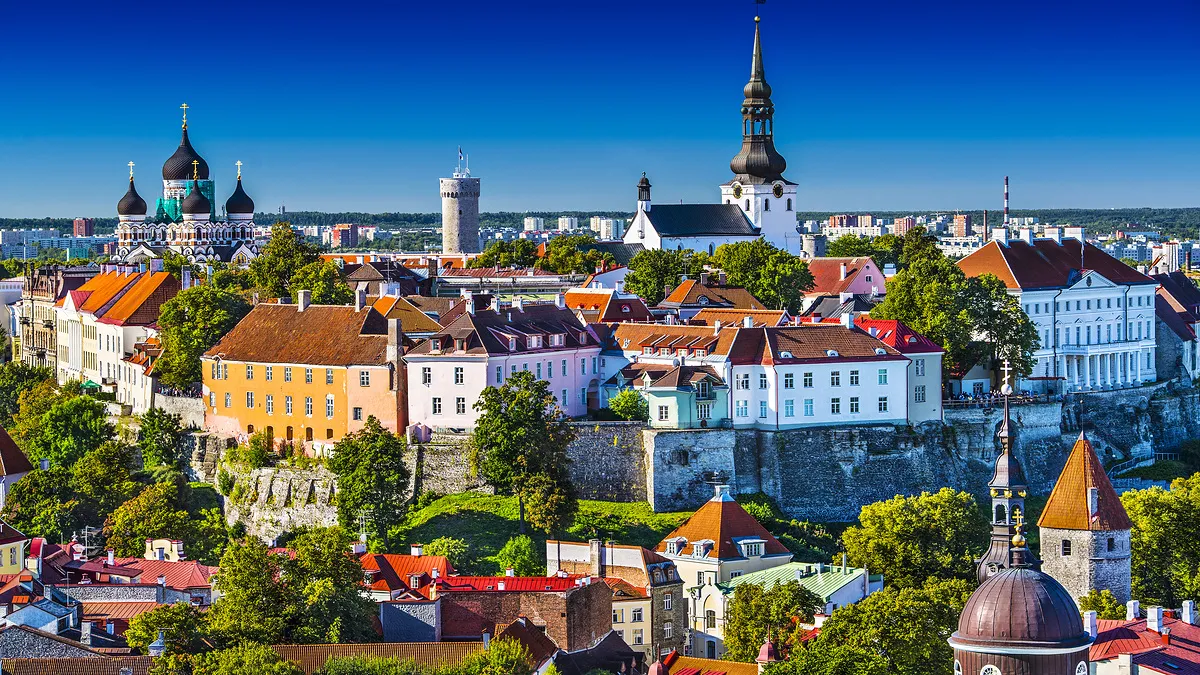


Tallinn [ˈtalːɪnː] (amtlich bis zum 24. Februar 1918 Reval [ˈʀeval], ein im deutschsprachigen Raum auch danach noch gebräuchlicher Name; andere ältere Namen: russisch Ревель = Rewel und vormals Колывань = Kolywan, dänisch Lyndanisse, schwedisch Lindanäs) ist die Hauptstadt von Estland. Sie liegt am Finnischen Meerbusen der Ostsee, etwa 80 Kilometer südlich von Helsinki.
Der Name Tallinn, den die Stadt seit der Eroberung durch den dänischen König Waldemar 1219 im Estnischen trägt, wird üblicherweise von „Taani-linn(a)“ (Dänische Stadt oder Dänische Burg, lateinisch: Castrum Danorum) abgeleitet.(Quelle:http://de.wikipedia.org/wiki/Tallinn)
Tallinn (deutsche Aussprache [ˈtalɪn], estnische Aussprache [ˈtɑlʲˑinˑ]) ist die Hauptstadt sowie das wirtschaftliche und kulturelle Zentrum Estlands und mit rund 430.000 Einwohnern auch die weitaus größte Stadt des Landes. Sie liegt am Finnischen Meerbusen der Ostsee, etwa 80 Kilometer südlich von Helsinki.
Bis zum 24. Februar 1918 hieß Tallinn amtlich Reval [ˈʀeːval], ein im deutschsprachigen Raum auch danach noch gebräuchlicher Name. Im Niederdeutschen lautet der Name Revel.[2] Andere ältere Namen sind russisch Ревель (Rewel) und vormals Колывань (Kolywan), dänisch Lyndanisse, schwedisch Lindanäs.
Den Namen Tallinn trug die Stadt im Estnischen bereits seit Eroberung durch den dänischen König Waldemar im Jahr 1219. Er wird üblicherweise abgeleitet von Taani-linn(a), was „Dänische Stadt“ oder „Dänische Burg“ (lateinisch Castrum Danorum) bedeutet.
塔林(Tallinn),旧名日瓦尔(Reval),位于爱沙尼亚西北部,濒临波罗的海,历史上曾一度是连接中东欧和南北欧的交通要冲,被誉为“欧洲的十 字路口”。塔林港是爱沙尼亚最大的港口,与芬兰首都赫尔辛基之间隔了80千米宽的芬兰湾。气候受海洋影响明显,春季凉爽少雨,夏秋季温暖湿润,冬季寒冷多 雪,年均气温4.7℃。共分8个区,总面积为158.3平方公里。2006年全市人口约40万。始建于1248年丹麦王国统治时期,1991年恢复独立后 成为爱沙尼亚共和国首都。塔林古城在1997年被列入联合国教科文组织世界遗产。
塔林最大的湖泊是于莱米斯泰湖(9.6平方千米),是城 市的主要饮用水源。第二大湖哈古湖(Lake Harku)面积1.6平方千米。与许多大城市不同,塔林唯一较大的河流位于塔林郊区的比力塔(Pirita)地区。其河谷因自然的湖光山色而被列为保护 区。一个石灰岩悬崖贯穿整个城市,最高点在城市西南部的诺姆尔区,海拔64米。海岸线长46千米,有3个较大的半岛:高普利半岛(Kopli)、巴扎斯萨 尔半岛(Paljassaare)和卡古马尔半岛(Kakumäe)。(Quelle:http://trip.elong.com/guide/europe-Tallinn-estonia_summary-5441.html)
塔林(爱沙尼亚语:Tallinn)是波罗的海最内部的芬兰湾滨的爱沙尼亚共和国的首都。旧称列巴尔(德语、丹麦语: Reval),沙俄时代名为列威利(Ревель),前苏联时代名为塔林(Таллин)。人口约42万。旧城是列入世界遗产名录的“塔林历史城区”。
2011年当选欧洲文化之都。位于爱沙尼亚北海岸,离北方对岸的芬兰首都赫尔辛基约80公里。
タリン(Tallinn [ˈtɑlʲˑinˑ])は、バルト海東部のフィンランド湾に面するエストニア共和国の首都。旧称はレバル(ドイツ語・デンマーク語: Reval)、ロシア帝国時代の名はレーヴェリ(Ревель)、ソビエト連邦時代の名はタリン(Та́ллин)である。人口約42万人。旧市街は世界遺産『タリン歴史地区』に指定されている。
タリンは、フィンランドの首都ヘルシンキ、ロシアのサンクトペテルブルクと同じく、フィンランド湾に面する主要都市の一つであり、2011年の欧州文化首都である。また、中世ハンザ都市の一つとして栄えた港湾都市で、現在もバルト海クルーズの主な寄港地の一つである。2008年にはNATOのサイバーテロ対策機関の本部が置かれた[1]。
フィンランド湾南岸のタリンから、同湾北岸のヘルシンキまでは85km、同湾東奥のサンクトペテルブルクまでは350kmの距離である。[2]
Tallinn (/ˈtɑːlɪn, ˈtælɪn/;[5][6][7] Estonian: [ˈtɑlʲˑinˑ]; names in other languages) is the capital and largest city of Estonia. It is on the northern coast of the country, on the shore of the Gulf of Finland in Harju County. From the 13th century until 1918 (and briefly during the Nazi occupation of Estonia from 1941 to 1944), in languages other than Estonian, the city was known as Reval.[8] Tallinn occupies an area of 159.2 km2 (61.5 sq mi) and has a population of 450,305.[9]
Tallinn, first mentioned in 1219, received city rights in 1248,[10] but the earliest human settlements date back 5,000 years.[11] The initial claim over the land was laid by the Danes in 1219, after a successful raid of Lindanise led by Valdemar II of Denmark, followed by a period of alternating Scandinavian and German rule. Due to its strategic location, the city became a major trade hub, especially from the 14th to the 16th century, when it grew in importance as part of the Hanseatic League.
Tallinn's Old Town is one of the best preserved medieval cities in Europe and is listed as a UNESCO World Heritage Site.[12] Tallinn is the major political, financial, cultural and educational center of Estonia. Often dubbed the Silicon Valley of Europe,[13] it has the highest number of startups per person in Europe[14] and is a birthplace of many international companies, including Skype. The city is to house the headquarters of the European Union's IT agency.[15] Providing to the global cybersecurity it is the home to the NATO Cyber Defence Centre of Excellence. It is ranked as a global city and has been listed among the top 10 digital cities in the world.[16] According to the Global Financial Centres Index Tallinn is the most competitive financial center in Northern Europe and ranks 52nd internationally. The city was a European Capital of Culture for 2011, along with Turku in Finland.
Tallinn (prononcé en estonien /'tɑlʲˑinˑ/), aussi orthographié Tallin2, est la capitale de l’Estonie et le principal port du pays (port marchand de Muuga, port passager Vanasadam). Elle est située sur la côte du golfe de Finlande, qui fait partie de la mer Baltique. Son ancien nom, en usage jusqu’en décembre 1918, est Reval en allemand, ou Revel en russe, qu’on désignait alors en français sous la forme Réval3.
Au 1er juin 2016, la ville comptait environ 447 414 habitants (Tallinnois), ce qui en fait la plus grande ville d’Estonie, sur un territoire de 159,2 km21.
Tallinn (Reval in tedesco, Tallinna in finlandese) è la capitale dell'Estonia nonché suo principale porto, è situata nella costa settentrionale del paese, affacciata sul Mar Baltico, in linea d'aria è divisa da 80 chilometri di Mar Baltico da Helsinki, quest'ultima situata più a Nord, inoltre Tallinn è anche la città più popolosa e maggiore centro economico e commerciale del paese estone.
La sua Città Vecchia medioevale, antico porto anseatico, è divenuta patrimonio dell'umanità dell'UNESCO nel 1997.
Tallinn è stata la Capitale Europea della Cultura per l'anno 2011 assieme alla città finlandese di Turku.[1]
Tallin2 (en estonio, Tallinn [ˈtɑlʲˑinˑ]) es la capital de la República de Estonia y del condado de Harju. Ocupa una superficie de 159,2 km² en los que habitan 446.055 habitantes, lo que la convierte en la ciudad más poblada de Estonia y su principal puerto. Está situada en la costa norte del país, a orillas del golfo de Finlandia, a 80 km al sur de Helsinki.
Tallin es el centro político y económico del Estado. La ciudad alberga la sede del Riigikogu (Parlamento de Estonia), el palacio presidencial y los ministerios. Además, en ella se encuentran radicadas la bolsa y las principales empresas del país.
La ciudad surgió como un puerto comercial en la ruta marítima que unía Europa Occidental con Rusia y conoció su máximo apogeo como ciudad hanseática en plena Edad Media. Tras la independencia de Estonia en 1991 Tallin ha vuelto a resurgir, esta vez por medio del turismo y la apuesta firme por las nuevas tecnologías.
Та́ллин[4][5][6][7][8] (Та́ллинн[9][10][11][12]; эст. Tallinn [ˈtɑlʲˑinˑ]) — столица Эстонской Республики, крупный пассажирский и грузовой морской порт.
Политический, научный, экономический и культурный центр Эстонии. В городе расположены все ветви власти республики, сосредоточено большинство высших и средних профессиональных учебных заведений страны.
 Eurovision Song Contest,ESC
Eurovision Song Contest,ESC

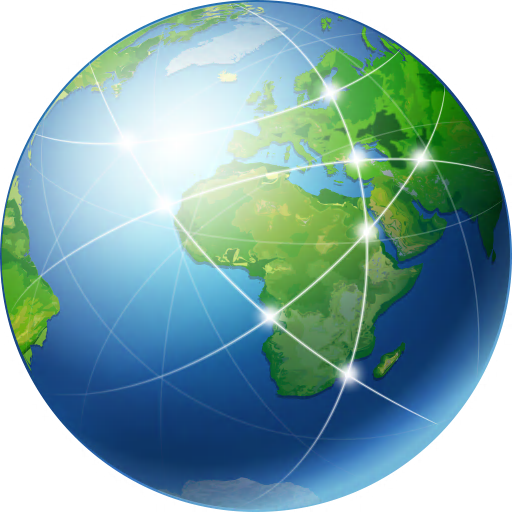 Geography
Geography

 Geography
Geography
 *World's Most Livable Cities
*World's Most Livable Cities

 History
History
 Austria
Austria
 Silk road
Silk road

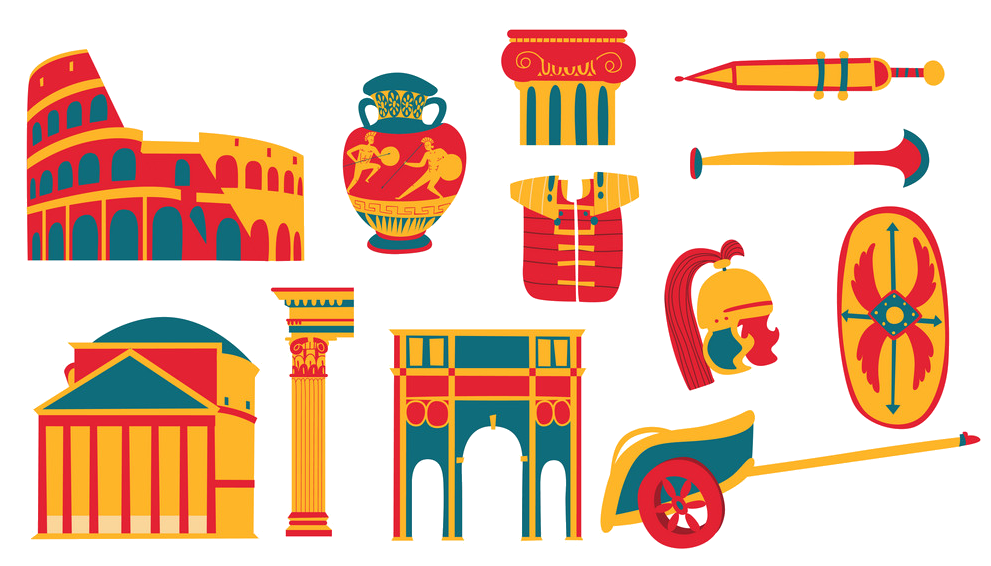 Cities founded by the Romans
Cities founded by the Romans

 World Heritage
World Heritage

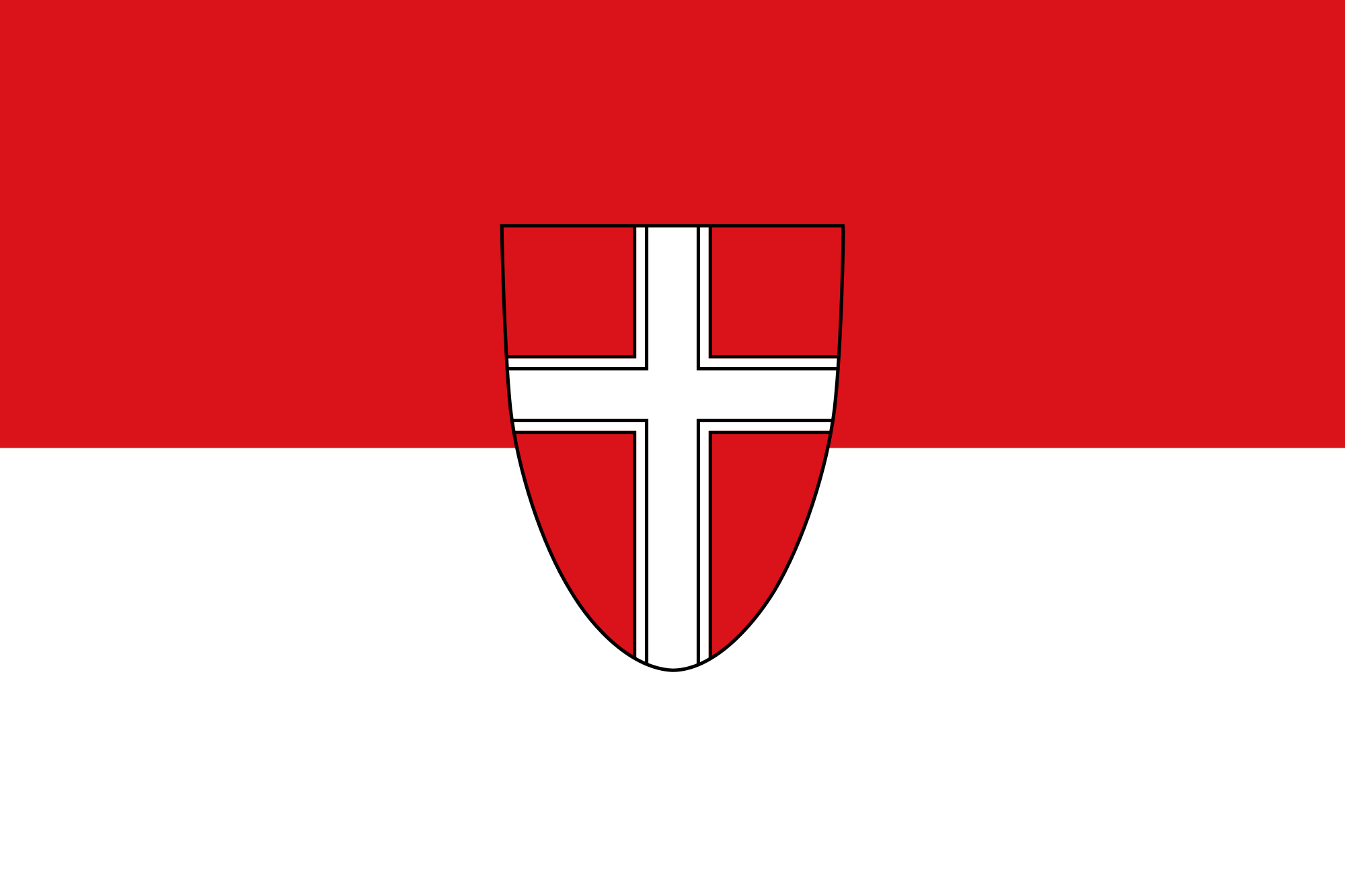 Vienna
Vienna
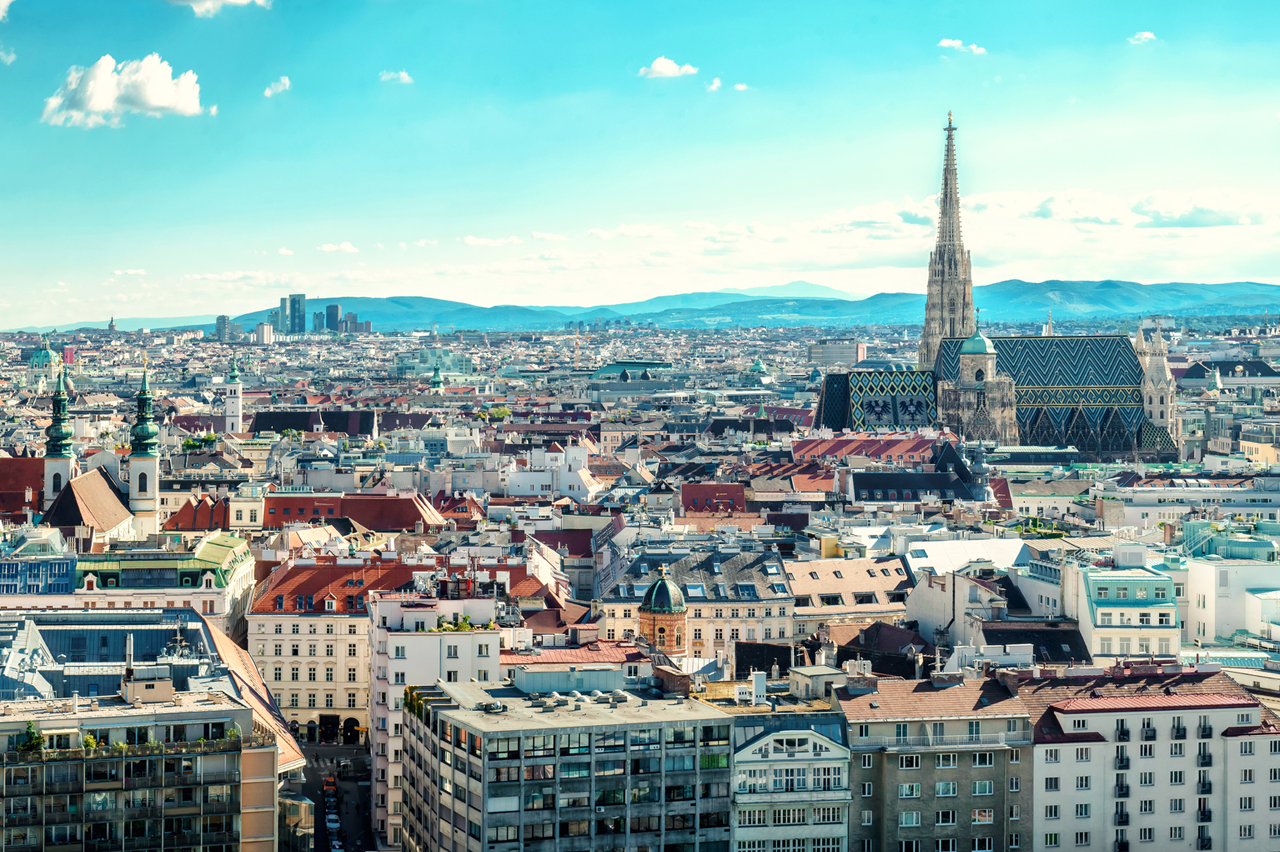
Wien  [viːn] ist die Bundeshauptstadt von Österreich und zugleich eines der neun österreichischen Bundesländer. Mit über 1,8 Millionen Einwohnern ist das an der Donau gelegene Wien die bevölkerungsreichste Großstadt Österreichs, die zweitgrößte im deutschen Sprachraum sowie die sechstgrößte Stadt der Europäischen Union.[10] Im Großraum Wien leben etwa 2,8 Millionen Menschen – das entspricht rund einem Drittel der österreichischen Gesamtbevölkerung.
[viːn] ist die Bundeshauptstadt von Österreich und zugleich eines der neun österreichischen Bundesländer. Mit über 1,8 Millionen Einwohnern ist das an der Donau gelegene Wien die bevölkerungsreichste Großstadt Österreichs, die zweitgrößte im deutschen Sprachraum sowie die sechstgrößte Stadt der Europäischen Union.[10] Im Großraum Wien leben etwa 2,8 Millionen Menschen – das entspricht rund einem Drittel der österreichischen Gesamtbevölkerung.
Architektonisch ist Wien bis heute vor allem von den Bauwerken um die Wiener Ringstraße aus der Gründerzeit, aber auch von Barock und Jugendstil geprägt. Durch seine Rolle als kaiserliche Reichshaupt- und Residenzstadt des Kaisertums Österreich ab 1804 wurde Wien im 19. Jahrhundert zu einem kulturellen und politischen Zentrum Europas. Als fünftgrößte Stadt der Welt zählte die Stadt um das Jahr 1910 über zwei Millionen Einwohner.[11] Das historische Zentrum von Wien sowie das Schloss Schönbrunn gehören heute zum UNESCO-Weltkulturerbe. Mit jährlich rund sieben Millionen Touristen und rund 15 Millionen Gästeübernachtungen zählt Wien zu den zehn meistbesuchten Städten Europas.[12]
Bereits beim Wiener Kongress 1814/15 spielte die Stadt eine bedeutende Rolle in der internationalen Diplomatie, die sie bis in die Gegenwart beibehalten hat. So ist Wien heute als internationaler Kongress- und Tagungsort Sitz von über 30 internationalen Organisationen,[13] darunter das Erdölkartell OPEC, die internationale Atomenergiebehörde IAEO und die OSZE, und zählt damit zu den Weltstädten.[14][15] Das Büro der Vereinten Nationen in Wien (UNOV) beherbergt im Vienna International Centre (VIC) einen der vier Amtssitze der UNO, im Volksmund meist als UNO-City bezeichnet.
Zudem gilt Wien als Stadt mit sehr hoher Lebensqualität. In der internationalen Mercer-Studie 2017/2018, in der die Lebensqualität anhand von 39 Kriterien wie politische, wirtschaftliche, soziale und Umweltfaktoren in 231 Großstädten weltweit verglichen wurden, belegte Wien zum neunten Mal in Folge den ersten Rang.[16] Eine Studie der Vereinten Nationen sah Wien 2012 als wohlhabendste Stadt der Welt.[17]
奥地利首都、著名音乐城市、国际旅游胜地维也纳,位于国境东北部阿尔卑斯山 北麓多瑙河畔,座落在维也纳盆地中,蓝色的多瑙河从市区静静流过,水秀山青,风景幽雅。著名的维也纳森林从西、北、南三面环绕着城市,辽阔的东欧平原从东 面与其相对,到处郁郁葱葱,生机勃勃。登上阿尔卑斯山麓,维也纳森林波浪起伏,尽收眼底。从多瑙河盆地可以远眺喀尔巴阡山闪耀的绿色峰尖,辽阔的平原犹如 一幅特大的绿毯,碧波粼粼的多瑙河穿流其间。维也纳环境优美,景色诱人,素有“多瑙河的女神”之称。
维也纳是一座拥有1800多年历史的古老城市,公元1世纪罗马人曾在这里建立城堡,到1137年成为奥地利公园的首邑。13世纪末期,城内出现大批宏伟的哥特式建筑,15世纪以后成为罗马帝国的首都和欧洲的经济中心。18世纪,随着艺术的繁荣,维也纳作为“音乐城市”闻名遐迩。
维也纳城区占地面积415平方公里,城市人口150万,房屋顺山势而建,布局层次分明,各种风格的教堂错落其间,使这座山青水碧的城市保持着浓厚的古 老庄重色彩。维也纳从内城向外城依次展开,分为3层。内城即老城,这里街道狭窄,卵石铺路,纵横交错,两旁多为巴罗克式、哥特式和罗马式建筑,中世纪的圣 斯特凡大教堂和双塔教堂的尖塔耸立蓝天,在高层建筑不多的城区显得格外醒目。围绕内城的内环城线,宽达50米,路边生长着各种树木,两旁有博物馆、市政 厅、国会、大学和国家歌剧院等重要建筑。内环城线与外环城线之间是城市的中间层,这儿是密集的商业区和住宅区,其间也有教堂、宫殿等建筑。外环城路的南面 和东面是工业区,西面是别墅区、公园区、宫殿等,一直延伸到森林的边缘。城市北面,多瑙河紧贴内城而流,在多瑙河与多瑙河运河之间,有一片岛状地带,这里 有公园、游艺场、体育场、码头、车站等。座落在城市北面的多瑙公园,也是游人云集的地方。多瑙公园内有一座耸入云天的多瑙塔,塔高252米,塔内装有两部 快速电梯,游客只须用45秒钟便可从塔底到达塔顶。塔顶设有室内咖啡馆和室外咖啡座,从塔顶四周眺望,远方的阿尔卑斯山的英姿和多瑙河两岸的美景尽收眼 底,随着塔顶的自动旋转,40分钟内可将维也纳全城景色一览无余。这里既有繁华都市景色,又有山林田园风光,游人常常会情不自禁地赞叹道:“美啊!维也 纳。”(Quelle:http://eur.bytravel.cn/v/39/)
维也纳(德语:Wien;英语:Vienna)是奥地利共和国的首都,也是该国最大都市,同时是奥地利九个联州之一。维也纳是奥地利的首要型都市,有着 172.3 万人口[5](若包含都会区则约 240 万人[4],将近奥地利人口的三分之一),并且是奥地利政治、经济、文化中心,该市人口数在欧盟城市中名列第七。二十世纪初,维也纳是世界上最大的德语都市,在第一次世界大战中奥匈帝国瓦解前,该市有 2 百万居民,时至今日,维也纳仍是德语区第二大都市,仅次于柏林。维也纳拥有许多重要的国际组织,包含联合国以及 OPEC 。城市坐落于奥地利东部,紧邻捷克、斯洛伐克和匈牙利边界,这些地区紧密相连,形成欧洲中部地区。如果加上布拉提斯拉瓦,维也纳就是个拥有 3 百万居民的大都会区。2001 年维也纳市中心古城区被指定为联合国世界遗产。2017 年 7 月它被移至濒危世界遗产的名录中。
维也纳除了因为丰富的音乐历史遗产而被称作“音乐之都”,也因为它是世界第一个心理治疗师西格蒙德·佛洛伊德的家乡而被称作“梦之都”。该城市最早是凯尔特人和罗马人的定居点,随后逐渐转变为中世纪及巴洛克时期的都市,接着成为奥匈帝国的首都。众所周知,从古典主义时代至 20 世纪初期,维也纳是具有领导地位的的欧洲音乐中心。维也纳历史中心有着丰富的建筑群,包含巴洛克式的城堡和花园、19 世纪末期环城大道上雄伟的建筑物、雕像以及公园。
维也纳也以高品质的生活著称。在 2005 年的研究中,经济学人智库在 127 个全球都市中,将维也纳选为世界最佳宜居城市第一名,与温哥华及旧金山同列。2011 到 2015 年之间,名列第二,仅次于墨尔本。2018 年,维也纳取代墨尔本,再次成为第一。连续八年(2009 年至 2016 年),人力资源顾问公司美世将维也纳列为年度生活质素调查的第一名。以此为基础,Monocle 的 2015 年生活品质调查,在世界最佳 25 个城市中将维也纳列为第二。
2012 及 2013 年,联合国人居署将维也纳列为世界最繁荣的都市。2007 及 2008 年,该城市在创新文化名列世界第一,并且在 2014 年的创新城市指数中从 256 个城市中拿到第六名,该指数分析 162 项指标,内容涵盖三大领域:文化、基础设施和市场。维也纳定期举办城市规划会议,而该城市本身也经常被城市规划者用作案例研究。
2005 年至 2010 年间,维也纳是世界上国际会议和大会的首选城市。维也纳每年吸引超过 680 万游客。
ウィーン[2](標準独: Wien〈ヴィーン〉、バイエルン・オーストリア語: Wean〈ヴェアン〉、仏: Vienne〈ヴィエンヌ〉、英: Vienna〈ヴィエナ〉)は、オーストリアの首都。2017年1月1日時点の人口は186万7582人。都市単独で一つの連邦州であり、ヨーロッパ有数の世界都市である。位置は、北緯48度12分5秒、東経16度22分38秒。第一次世界大戦まではオーストリア=ハンガリー帝国の首都としてドイツを除く中東欧の大部分に君臨し、さらに19世紀後半まではドイツ連邦や神聖ローマ帝国を通じて形式上はドイツ民族全体の帝都でもあった。クラシック音楽が盛んで過去にモーツァルトやベートーヴェン、シューベルトなど、多くの作曲家が活躍したことから「音楽の都」・「楽都」とも呼ばれる[3]。
ローマ帝国の宿営地ウィンドボナ (Vindobona) をその起源とし、かつてヨーロッパの数か国を支配したハプスブルク家のオーストリア帝国の首都であった。マリア・テレジア女帝時代に栄えた市街は、フランツ・ヨーゼフ1世の治下で整備された。リングと呼ばれる環状道路は、ウィーンの近代化を実現するために、19世紀の後半にかつて旧市街を囲んでいた堀を埋め立てて造られたものである。シュテファン寺院(シュテファン大聖堂)や旧市街をふくむ歴史地区は、「ウィーン歴史地区」の名称で2001年にユネスコの世界遺産に登録された。ここには旧王宮であるホーフブルク宮殿(現在は大統領官邸や博物館、国立図書館などとして使用)・ウィーン国立歌劇場・ブルク劇場・自然史博物館・美術史博物館、南駅に近いベルヴェデーレ宮殿などが含まれる。
ウィーンは、そもそもの成り立ちが2つの道が交差するところに生まれた町であった。ドナウ川に沿ってヨーロッパを東西に横切る道と、バルト海とイタリアを結ぶ南北の道(「琥珀街道」)である。そこはゲルマン系、スラヴ系、マジャール系、ラテン系のそれぞれの居住域の接点にあたり、歴史的にみても、上述のように、紀元前5世紀以降ケルト人の居住する小村であったところにローマ帝国の北の拠点が建設されたのが起源であった。オスマン帝国の隆盛時にはヨーロッパからみてアジアへの入り口にもあたっており、伝統的にも多彩な民族性を集約する都市として栄えた。
その地理上の位置は、かつて共産圏に属した東ドイツのベルリンや東欧スラヴ民族の国家チェコのプラハよりも東であり、第二次世界大戦後の冷戦時代にあっても、国際政治上微妙な位置にあった。
また、都心から南南西方面に離れた場所には、かつてウィーン会議の舞台となった世界遺産のシェーンブルン宮殿がある。これは、レオポルト1世が狩猟用の別荘として建てたものを、マリア・テレジアが離宮として完成させたものである。
現在のウィーンは、国際機関本部の集積地ともなっており、日本政府も在ウィーン国際機関日本政府代表部を置いている。ウィーンに本部を置いている機関は次の通り。
Vienna (/viˈɛnə/ ( listen);[10][11] German: Wien, pronounced [viːn] (
listen);[10][11] German: Wien, pronounced [viːn] ( listen)) is the federal capital and largest city of Austria, and one of the nine states of Austria. Vienna is Austria's primary city, with a population of about 1.8 million[1] (2.6 million within the metropolitan area,[4] nearly one third of Austria's population), and its cultural, economic, and political centre. It is the 7th-largest city by population within city limits in the European Union. Until the beginning of the 20th century, it was the largest German-speaking city in the world, and before the splitting of the Austro-Hungarian Empire in World War I, the city had 2 million inhabitants.[12] Today, it has the second largest number of German speakers after Berlin.[13][14] Vienna is host to many major international organizations, including the United Nations and OPEC. The city is located in the eastern part of Austria and is close to the borders of the Czech Republic, Slovakia, and Hungary. These regions work together in a European Centrope border region. Along with nearby Bratislava, Vienna forms a metropolitan region with 3 million inhabitants.[citation needed] In 2001, the city centre was designated a UNESCO World Heritage Site. In July 2017 it was moved to the list of World Heritage in Danger.[15]
listen)) is the federal capital and largest city of Austria, and one of the nine states of Austria. Vienna is Austria's primary city, with a population of about 1.8 million[1] (2.6 million within the metropolitan area,[4] nearly one third of Austria's population), and its cultural, economic, and political centre. It is the 7th-largest city by population within city limits in the European Union. Until the beginning of the 20th century, it was the largest German-speaking city in the world, and before the splitting of the Austro-Hungarian Empire in World War I, the city had 2 million inhabitants.[12] Today, it has the second largest number of German speakers after Berlin.[13][14] Vienna is host to many major international organizations, including the United Nations and OPEC. The city is located in the eastern part of Austria and is close to the borders of the Czech Republic, Slovakia, and Hungary. These regions work together in a European Centrope border region. Along with nearby Bratislava, Vienna forms a metropolitan region with 3 million inhabitants.[citation needed] In 2001, the city centre was designated a UNESCO World Heritage Site. In July 2017 it was moved to the list of World Heritage in Danger.[15]
Apart from being regarded as the City of Music[16] because of its musical legacy, Vienna is also said to be "The City of Dreams" because it was home to the world's first psychotherapist – Sigmund Freud.[17] The city's roots lie in early Celtic and Roman settlements that transformed into a Medieval and Baroque city, and then the capital of the Austro-Hungarian Empire. It is well known for having played an essential role as a leading European music centre, from the great age of Viennese Classicism through the early part of the 20th century. The historic centre of Vienna is rich in architectural ensembles, including Baroque castles and gardens, and the late-19th-century Ringstraße lined with grand buildings, monuments and parks.[18]
Vienna is known for its high quality of life. In a 2005 study of 127 world cities, the Economist Intelligence Unit ranked the city first (in a tie with Vancouver and San Francisco) for the world's most liveable cities. Between 2011 and 2015, Vienna was ranked second, behind Melbourne.[19][20][21][22][23] In 2018, it replaced Melbourne as the number one spot.[24] For eight consecutive years (2009–2016), the human-resource-consulting firm Mercer ranked Vienna first in its annual "Quality of Living" survey of hundreds of cities around the world, a title the city still held in 2016.[25][26][27][28][29][30][31] Monocle's 2015 "Quality of Life Survey" ranked Vienna second on a list of the top 25 cities in the world "to make a base within."[32][33][34][35][36]
The UN-Habitat classified Vienna as the most prosperous city in the world in 2012/2013.[37] The city was ranked 1st globally for its culture of innovation in 2007 and 2008, and sixth globally (out of 256 cities) in the 2014 Innovation Cities Index, which analyzed 162 indicators in covering three areas: culture, infrastructure, and markets.[38][39][40] Vienna regularly hosts urban planning conferences and is often used as a case study by urban planners.[41]
Between 2005 and 2010, Vienna was the world's number-one destination for international congresses and conventions.[42] It attracts over 6.8 million tourists a year.[43]
Vienne (prononcé : /vjɛn/ ; en allemand : Wien [viːn] Écouter ; en bavarois : Wean ; en hongrois : Bécs) est la capitale et la plus grande ville de l'Autriche ; elle est aussi l'un des neuf Länder (État fédéré) du pays (en allemand : Bundesland Wien).
La ville est située dans l'est du pays et traversée par le Danube (Donau). Capitale du duché puis archiduché d'Autriche, elle fut de fait celle du monde germanique durant le règne de la maison de Habsbourg (devenue en 1745 la maison de Habsbourg-Lorraine) sur le Saint-Empire romain germanique (1273-1291, 1298-1308, 1438-1806) puis présida la Confédération germanique (1815-1866). Elle fut en même temps celle de l'empire d'Autriche (1804–1867) puis de l'Autriche-Hongrie (1867-1918). Elle a été le point de départ de la crise bancaire de mai 1873. Depuis plusieurs années, elle figure dans les premières places de nombreux classements internationaux récompensant la qualité de vie des métropoles. Par exemple, la ville est en tête du classement selon l'indice Mercer évaluant le coût de la vie et la qualité de vie de 221 villes dans le monde1,2.
Peuplée d'environ 1,8 million d'habitants3, Vienne est le principal centre culturel, politique et économique de l'Autriche. Jusqu'au début du XXe siècle, elle est la plus grande ville germanophone au monde. Elle est aujourd'hui deuxième derrière Berlin.
Vienne est un important centre politique international, notamment en raison de la neutralité autrichienne, puisqu'y siègent l'OSCE, l'OPEP et diverses agences de l'ONU, comme l'Agence internationale de l'énergie atomique, l'Office des Nations unies contre la drogue et le crime ou l'ONUDI. En 1958, Vienne partage avec La Haye le prix de l'Europe4. Par ailleurs, la ville a été le lieu de signature d'un grand nombre de conventions et traités internationaux. Entre 2005 et 2010, Vienne a été la première destination mondiale pour les congrès et conventions internationales.
Surnommée la « Ville des rêves » parce que l'inventeur de la psychanalyse, Sigmund Freud, y résida, ou encore la « Ville de la musique », en raison de l'influence considérable que la ville a eue dans le domaine de la musique, notamment à travers le classicisme viennois, Vienne accueille environ 3,7 millions de touristes chaque année. Grâce à sa riche histoire, elle bénéficie d'un patrimoine culturel et architectural remarquable. Depuis 2001, le centre historique de Vienne est classé au patrimoine mondial de l'UNESCO5.
Viena (en alemán: Wien AFI:  [viːn] (?·i)) es una ciudad austriaca en Europa Central situada a orillas del Danubio, en el valle de los Bosques de Viena, al pie de las primeras estribaciones de los Alpes. Es la capital de Austria y uno de sus nueve estados federados (Bundesland Wien).
[viːn] (?·i)) es una ciudad austriaca en Europa Central situada a orillas del Danubio, en el valle de los Bosques de Viena, al pie de las primeras estribaciones de los Alpes. Es la capital de Austria y uno de sus nueve estados federados (Bundesland Wien).
Está rodeada por el Estado federado de Baja Austria. Viena es la mayor ciudad, centro cultural y político de Austria. Además es la segunda ciudad más poblada de Europa Central (tras Berlín) y la décima ciudad en población de la Unión Europea. Su población supera el 1.800.000 de habitantes (2017) y su área metropolitana cuenta con 2,4 millones, población similar a la que tenía la ciudad en 1914. El idioma oficial es el alemán y se habla en una de sus variantes bávaras.
La ciudad tiene una larga historia, ya que es una de las más antiguas capitales de Europa, por lo que cuenta con un importante patrimonio artístico. Durante el siglo XIX fue una de las grandes capitales musicales del mundo y a principios del siglo XX meca de la filosofía y el debate político de Occidente, así como uno de los principales centros culturales mundiales.
Ве́на (нем. Wien [ˈviːn], бав. Wean, лат. Vindobona и Metropolis civitas Viennensium) — федеральная столица Австрии и одновременно одна из девяти федеральных земель Австрии, расположенная внутри другой земли, Нижней Австрии. Расположена в восточной части страны. Население Вены составляет 1 867 582 чел. (2017-01-01)[1]; вместе с пригородами — около 2,6 млн (более 25 % населения Австрии); таким образом, Вена является самым крупным по населению городом Австрии, занимая седьмое место среди самых крупных городов Европейского союза и второе место среди немецкоязычных городов после Берлина. Культурный, экономический и политический центр Австрии.
Вена является третьим городом-резиденцией ООН после Нью-Йорка и Женевы. Венский международный центр (так называемый UNO-City) включает в себя МАГАТЭ, УНП ООН, организации ООН по промышленному развитию и др. В Вене находятся штаб-квартиры таких международных организаций, как ОПЕК и ОБСЕ.
В течение многих столетий Вена являлась городом-резиденцией Габсбургов, а во времена их правления и столицей Священной Римской империи германской нации, превратившись в культурный и политический центр Европы. В 1910 году в Вене проживало два миллиона человек, она занимала четвёртое место среди крупнейших городов мира, уступая лишь Лондону, Нью-Йорку и Парижу. После Первой мировой войны, повлёкшей за собой окончательный развал империи, население Вены сократилось почти на четверть и расти перестало.
Старый город Вены и дворец Шёнбрунн в декабре 2001 года были внесены в список Всемирного наследия ЮНЕСКО.
Согласно результатам международного исследования агентства Mercer, опубликованного в мае 2012 года, в котором сравнивалось качество жизни в 221 городе, Вена пятый раз подряд заняла первое место в мире по качеству жизни[3]

 Eurovision Song Contest,ESC
Eurovision Song Contest,ESC

 History
History
 Greece
Greece

 International cities
International cities
 *European Capital of Culture
*European Capital of Culture
 Olympic Summer Games
Olympic Summer Games
 Silk road
Silk road

 World Heritage
World Heritage

 Important port
Important port

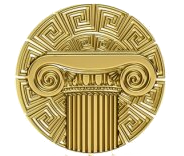 Civilization
Civilization
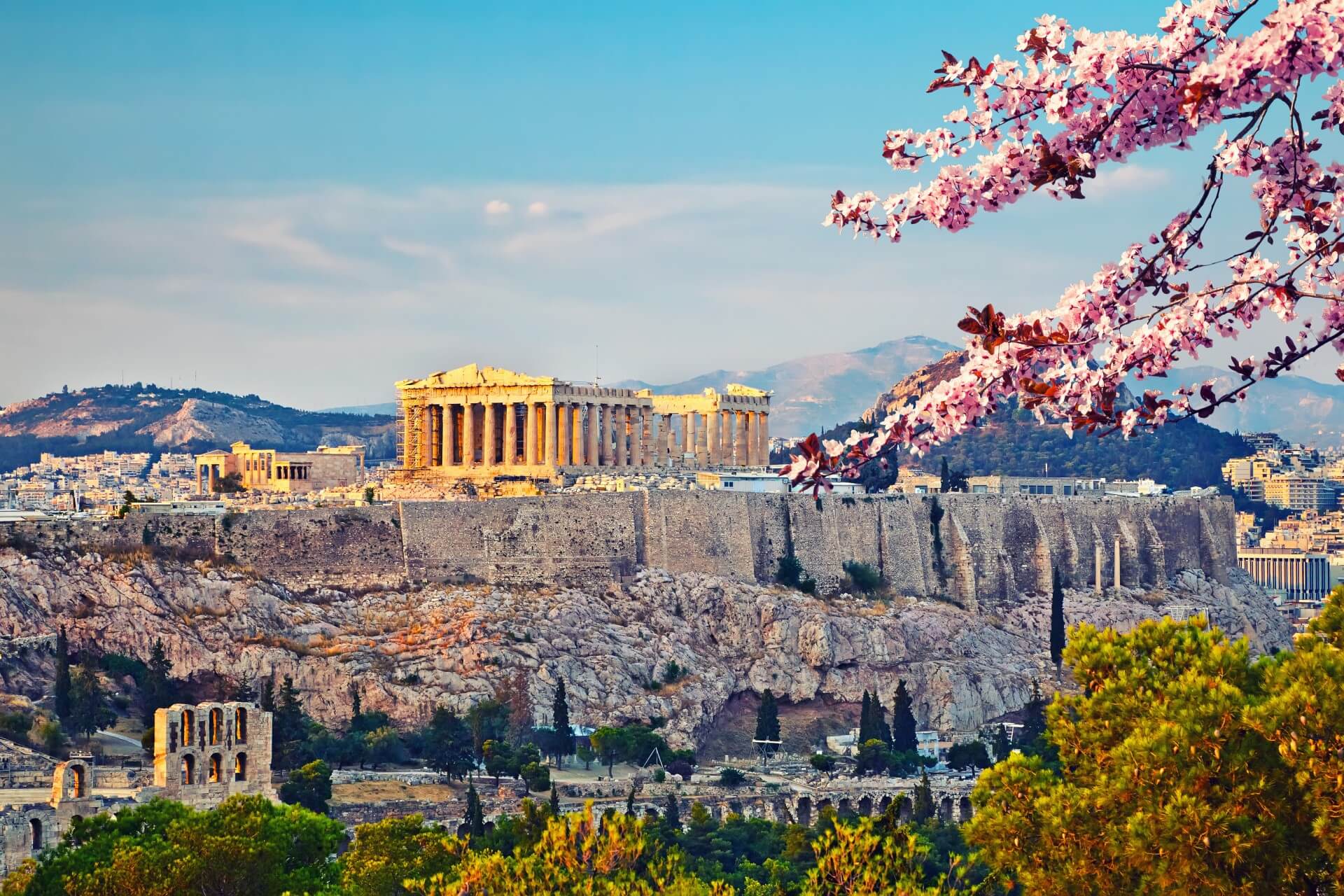
Die Stadt Athen (neugriechisch Αθήνα [aˈθina] (f. sg), Athína; altgriechisch Ἀθῆναι (f. pl.), Athēnai) ist die Hauptstadt Griechenlands. Sie wurde vor etwa 5000 Jahren besiedelt. Athen ist die bevölkerungsreichste und flächengrößte Stadt des Landes. Die Gemeinde Athen im Zentrum des Ballungsraums Athen-Piräus ist dabei relativ klein. Athen im weiteren Sinne umfasst das Gebiet der Regionalbezirke Athen-Zentrum, Athen-Nord, Athen-Süd, Athen-West und einiger umliegender Vororte mit zusammen 4,0 Mio. Einwohnern.[2]
Als kulturelles, historisches und wirtschaftliches Zentrum des Landes ist Athen auch die bedeutendste Metropole Griechenlands. Der Flughafen ist der wichtigste des Landes, während große Häfen sich auswärts in Piräus und Rafina befinden, wo auch der Schiffsverkehr zu den zahlreichen griechischen Inseln abgefertigt wird. Im Schienenverkehr hat Athen nationale, jedoch keine internationale Bedeutung.
Die Stadt ist seit der Jungsteinzeit kontinuierlich besiedelt[3] und damit eine der ältesten Siedlungen und Städte Europas. 1985 wurde Athen erste Kulturhauptstadt Europas. In die Liste des Weltkulturerbe der UNESCO wurde 1987 die Akropolis und 1990 das Kloster Daphni aufgenommen.
Athen war in der klassischen Zeit Ort der attischen Polis. Die in dieser Zeit (5. Jahrhundert v. Chr.) entstandene attische Demokratie gilt als Begründerin einer auf dem Prinzip der Volkssouveränität gegründeten politischen Ordnung.
雅典是希腊的首都,也是希腊最大的城市和工业中心。山海掩映,阳光璀璨,素以欧洲文明的摇篮、丰富的历史遗迹而著称,清新的空气、宜人的气候也闻名于世。每年有600-700万世界各地的游客前来观光或度假。
雅典建城至今已经有5000多年的历史,公元前8世纪,爱奥尼亚人建成的雅典是古希腊城邦的盟主。古代雅典是西方文化的源泉,雅典人对艺术、哲学、法律、科学作出了杰出的贡献。公元前5世纪为雅典的鼎盛时期,出现了许多不朽的大师。大悲剧家欧里庇德斯、大喜剧家阿里斯托芬、哲学家苏格拉底、柏拉图、亚里斯多德、历史学家希罗多德等都在这里诞生或居住过,这些光辉的名字照耀着人类文化的黎明。
雅典是希腊的古文物中心,至今仍保存着很多古代文化遗址,如今仍能显出当年的雄伟气概。雅典的博物馆世界驰名。
跨越时空两千五百年正是雅典给人的感觉,山丘上的卫城是西元前五百年的伟大艺术杰作,而山下的波拉卡区千年来就是一本希腊人的生活宝库,而身为希腊的首都及最大的城市,雅典的现代化建筑,拥挤的交通和空气污染严重,又和世界一般大都会无异。
现在雅典是全世界旅游爱好者的度假胜地。蔚蓝的爱琴海边涛声依旧,雅典的一砖一砾都闪烁着人类文明的光辉。 (Quelle:http://eur.bytravel.cn)
雅典(希腊语:Αθήνα,Athína,[aˈθina];古希腊语:Άθῆναι,转写:Athēnai)是希腊首都,也是希腊最大的城市。雅典位于巴尔干半岛南端,三面环山,一面傍海,西南距爱琴海法利龙湾8公里,属亚热带地中海气候。基菲索斯河和伊利索斯河穿城而过。市内多小山。
雅典是世界上最老的城市之一,有记载的历史就长达3000多年。现在雅典是欧洲第八大城市[1]。雅典是希腊经济、财政、工业、政治和文化中心。雅典也是欧盟商业中心之一。市区人口330万,加上郊区人口共有380万人口。城市的面积为39平方公里,加上郊区为412平方公里。[2]
古雅典是一个强大的城邦,是驰名世界的文化古城。希腊是西方哲学的摇篮,是柏拉图学院和亚里士多德的讲学场所的所在地。[3][4]苏格拉底、希罗多德、伯里克利、索福克勒斯、阿里斯托芬、欧里庇得斯、埃斯库罗斯和其他著名的哲学家、政治家和文学家都在雅典诞生或居住过[5],雅典也因此被称作“西方文明的摇篮”和民主的起源地。[6]公元前5世纪和4世纪在文化和政治上的成就对欧洲及世界文化产生重大影响。[7]
雅典至今仍保留了很多历史遗迹和大量的艺术作品,其中最著名的是雅典卫城的帕提农神庙,是西方文化的象征。
雅典是现代奥运会起源的地方。1896年曾举办过第一届夏季奥运会。2004年,第二十八届夏季奥林匹克运动会在雅典举行。
アテネ(現代ギリシア語: Αθήνα; Athína; IPA: [aˈθina]; カサレヴサ: Ἀθῆναι, Athinai; 古代ギリシア語: Ἀθῆναι, Athēnai)は、ギリシャ共和国の首都で同国最大の都市である。
アテネはアッティカ地方にあり、世界でももっとも古い都市の一つで約3,400年の歴史がある。古代のアテネであるアテナイは強力な都市国家であったことで知られる。芸術や学問、哲学の中心で、プラトンが創建したアカデメイアやアリストテレスのリュケイオン[1][2]があり、西洋文明の揺籃や民主主義の発祥地として広く言及されており[3][4]、その大部分は紀元前4-5世紀の文化的、政治的な功績により後の世紀にヨーロッパに大きな影響を与えたことは知られている。[5]今日の現代的なアテネは世界都市としてギリシャの経済、金融、産業、政治、文化生活の中心である。2008年にアテネは世界で32番目に富める都市に位置し[6]、UBSの調査では25番目に物価が高い都市[7]に位置している。
アテネ市の人口は655,780人[8](2004年は796,442人)[9]、市域面積は39 km2 (15 sq mi)[10]である。アテネの都市的地域(大アテネや大ピラエウス)は市域を超えて広がっており、人口は2011年現在3,074,160人に達し[11]、都市的地域の面積は412 km2 (159 sq mi)[10]である。ユーロスタットによれば大都市圏地域(Larger Urban Zones,LUZ) (en) の人口は欧州連合域内では7番目に大きい。
古典ギリシア(英語版)の文化的遺産は今でもはっきりとしており、多くの古代遺跡や芸術作品が象徴している。もっとも有名で代表的なものにはパルテノン神殿があり初期の西洋文明の鍵となるランドマークと見なされる場合もある。アテネにはローマ帝国支配下のギリシャやビザンティンの遺跡もあり同様に少数のオスマン帝国の遺跡も残されているなど、何世紀にもわたる長い歴史を投影するモニュメントとなっている。アテネには2つのユネスコの世界遺産がありアテナイのアクロポリスと中世のダフニ修道院がそうである。現代のランドマークはギリシアが1833年に独立国となりアテネが首都に制定された時のもので、ギリシャ議会の議事堂や3部作(Trilogy )で構成されたギリシア国立図書館(英語版)、アテネ大学、アテネアカデミー(英語版)が含まれる。アテネは、最初の近代オリンピックであるアテネオリンピックと、その108年後に開催されたアテネオリンピック (2004年)の2度のオリンピックの舞台である。[12]アテネにはアテネ国立考古学博物館があり、世界最大の古代ギリシアの遺品の収蔵を特徴とし新しい2008年に完成したアクロポリス博物館もある。ギリシャ正教会の首長であるアテネ大主教が所在し、精神的な中心地でもある。(ギリシャ正教会は正教会に属し、クレタ島を除くギリシャ一国を管轄する。)正教会の定めるアテネの守護聖人は、ディオニシオス・オ・アレオパギティス、イェロテオス、フィロセイ。1985年には欧州文化首都に選ばれた。
Athens (/ˈæθɪnz/;[3] Greek: Αθήνα, Athína [aˈθina]; Ancient Greek: Ἀθῆναι, Athênai [a.tʰɛ̂ː.nai̯]) is the capital and largest city of Greece. Athens dominates the Attica region and is one of the world's oldest cities, with its recorded history spanning over 3,400 years[4] and its earliest human presence starting somewhere between the 11th and 7th millennium BC.[5]
Classical Athens was a powerful city-state that emerged in conjunction with the seagoing development of the port of Piraeus, which had been a distinct city prior to its 5th century BC incorporation with Athens. A centre for the arts, learning and philosophy, home of Plato's Academy and Aristotle's Lyceum,[6][7] it is widely referred to as the cradle of Western civilization and the birthplace of democracy,[8][9] largely because of its cultural and political impact on the European continent, and in particular the Romans.[10] In modern times, Athens is a large cosmopolitan metropolis and central to economic, financial, industrial, maritime, political and cultural life in Greece. In 2012, Athens was ranked the world's 39th richest city by purchasing power[11] and the 67th most expensive[12] in a UBS study.
Athens is a global city and one of the biggest economic centres in southeastern Europe. It has a large financial sector, and its port Piraeus is both the largest passenger port in Europe,[13][14][15][16] and the second largest in the world.[17][dead link] The Municipality of Athens (also City of Athens) had a population of 664,046 (in 2011)[2] within its administrative limits, and a land area of 38.96 km2 (15.04 sq mi).[18][19] The urban area of Athens (Greater Athens and Greater Piraeus) extends beyond its administrative municipal city limits, with a population of 3,090,508 (in 2011)[20] over an area of 412 km2 (159 sq mi).[19] According to Eurostat[21] in 2011, the functional urban area (FUA) of Athens was the 9th most populous FUA in the European Union (the 6th most populous capital city of the EU), with a population of 3.8 million people. Athens is also the southernmost capital on the European mainland.
The heritage of the classical era is still evident in the city, represented by ancient monuments and works of art, the most famous of all being the Parthenon, considered a key landmark of early Western civilization. The city also retains Roman and Byzantine monuments, as well as a smaller number of Ottoman monuments. Athens is home to two UNESCO World Heritage Sites, the Acropolis of Athens and the medieval Daphni Monastery. Landmarks of the modern era, dating back to the establishment of Athens as the capital of the independent Greek state in 1834, include the Hellenic Parliament and the so-called "architectural trilogy of Athens", consisting of the National Library of Greece, the National and Kapodistrian University of Athens and the Academy of Athens. Athens is also home to several museums and cultural institutions, such as the National Archeological Museum, featuring the world's largest collection of ancient Greek antiquities, the Acropolis Museum, the Museum of Cycladic Art, the Benaki Museum and the Byzantine and Christian Museum. Athens was the host city of the first modern-day Olympic Games in 1896, and 108 years later it welcomed home the 2004 Summer Olympics, making it one of only a handful of cities to have hosted the Olympics more than once.[22]
Athènes (en grec ancien Ἀθῆναι / Athễnai — le nom est toujours pluriel —, en grec moderne Αθήνα [a'θina] / Athína) est la capitale et la plus grande ville de la Grèce. En 2011, elle compte 664 046 habitants intra-muros sur une superficie de 39 km2. Son aire urbaine, le Grand Athènes, qui comprend notamment le port du Pirée, en compte plus de 3 millions. Berceau de la civilisation occidentale et dotée d'un riche passé, la ville est aujourd'hui le cœur politique, économique et culturel de la République hellénique, dont elle accueille la plupart des institutions, comme le Parlement, l'Áreios Págos (cour suprême) et le siège du Gouvernement.
Athènes est l'une des plus anciennes villes au monde, avec une présence humaine attestée dès le Néolithique. Fondée vers -800 autour de la colline de l'Acropole — par le héros Thésée, selon la légende —, la cité domine la Grèce au cours du Ier millénaire av. J.‑C.. Elle connaît son âge d'or au Ve siècle av. J.-C., sous la domination du stratège Périclès : principale puissance militaire de Grèce, à la tête d'une vaste alliance de cités, elle est également le cœur culturel de la Méditerranée. Première république de l'histoire, la démocratie athénienne connaît une vie intellectuelle importante, rassemblant des philosophes antiques (Socrate, Platon, Aristote), des auteurs de théâtre (Eschyle, Sophocle, Euripide, Aristophane) et l'historien Thucydide. De nombreux témoignages de cette période faste ont été conservés, comme le Parthénon, l'Agora (qui comprend notamment le temple d'Héphaïstos), l'Olympéion, le théâtre de Dionysos ou encore le Stade panathénaïque.
Intégrée au royaume de Macédoine, puis à l'Empire byzantin — période durant laquelle fut bâti le monastère de Daphni —, Athènes est conquise par l'Empire ottoman en 1456 et reste sous sa domination jusqu'en 1822, année de l'indépendance de la Grèce. Elle en devient la capitale et connaît une importante croissance urbaine. Occupée lors des deux guerres mondiales, la ville est ravagée par les destructions de la guerre civile grecque (1946 – 1949). Durant la seconde moitié du XXe siècle, Athènes devient le cœur économique et universitaire d'une Grèce en plein développement, dont les symboles sont les grandes avenues commerçantes telles que l'avenue Kifissias ou l'avenue Vasilissis Sofias. Frappée de plein fouet par la crise grecque depuis 2009, la ville a perdu plusieurs dizaines de milliers d'habitants et fait face à d'importantes difficultés économiques.
La ville s'étend sur la plaine d'Attique, sur les rives de la mer Égée. Elle est le chef-lieu du district régional d'Athènes-Centre et la capitale de la périphérie d'Attique, mais aussi celle du diocèse décentralisé du même nom. Le quartier le plus ancien, Pláka, est situé en contrebas de l'Acropole et comprend notamment la place Monastiráki. Kolonáki est le quartier huppé, à proximité de la place Syntagma. Enfin, Exárcheia est le quartier alternatif et branché de la ville, foyer de l'anarchisme en Grèce et de la contestation populaire depuis la crise. Grâce à son climat méditerranéen et ses nombreux musées, comme le musée de l'Acropole ou le musée national archéologique, Athènes est l'une des principales destinations touristiques d'Europe. Elle a également accueilli les Jeux olympiques d'été en 1896 et en 2004.
Atene (AFI: /aˈtɛne/[2]; in greco Αθήνα, traslitterato in Athína; in greco antico: Ἀθῆναι, Athḕnai)[3] è un comune greco di 655 780 abitanti,[1] capitale della Repubblica Ellenica, capoluogo dell'unità periferica di Atene Centrale e della periferia dell'Attica.
Il comune di Atene, stricto sensu, ha una superficie di 39 km², ma l'area metropolitana intesa come Grande Atene[4] ha un'estensione di 412 km² con 4 013 368 abitanti, ed è così la settima conurbazione più grande dell'Unione europea, e la quinta capitale più popolosa dell'Unione.[5]
Atene è una metropoli cosmopolita ed è il centro economico, finanziario, industriale e culturale della Grecia, e ha una notevole importanza a livello europeo, ma anche mondiale.[6] Nel 2012 è stata classificata come la 39ª città più ricca del mondo per potere d'acquisto[7] e come la 77ª più costosa[8] in una ricerca effettuata dalla società svizzera UBS.
È nota in tutto il mondo per la nascita della democrazia, per essere stata la sede dell'accademia di Platone e del liceo di Aristotele, oltre che aver dato i natali a Socrate, Pericle, Sofocle e molti altri filosofi e personaggi importanti dell'antichità. Tra le città più antiche del mondo,[9] è stata una fiorente polis ed è considerata la culla della civiltà occidentale.[10] Nel XXI secolo è stata al centro dell'attenzione di tutto il mondo per aver organizzato con successo i Giochi della XXVIII Olimpiade nel 2004 e per l'inaugurazione del Nuovo Museo dell'Acropoli nel 2009, che ha riaperto il dibattito riguardante i Marmi del Partenone.
Dall'aprile 2018 all'aprile 2019, Atene sarà capitale mondiale del libro.[11]
La città è anche la sede del Santo Sinodo della Chiesa di Grecia, presso il Monastero di Petraki.
Tradizionalmente la protettrice della città è la dea Atena, raffigurata sia sullo stemma che sulla bandiera della città.
Atenas (griego antiguo: Ἀθῆναι, romanización: Athēnai, griego moderno: Αθήνα, romanización: Athína) es la capital de Grecia y actualmente la ciudad más grande del país. La población del municipio de Atenas es de 664 046 (en 2011), pero su área metropolitana es mucho mayor y comprende una población de 3,8 millones (en 2011). Es el centro principal de la vida económica, cultural y política griega.
La historia de Atenas se extiende más de tres mil años, lo que la convierte en una de las ciudades habitadas más antiguas. Durante la época clásica de Grecia, fue una poderosa ciudad estado que nació junto con el desarrollo de la navegación marítima del puerto de El Pireo y que tuvo un papel fundamental en el desarrollo de la democracia. También fue un centro cultural donde vivieron muchos de los grandes artistas, escritores y filósofos de la Antigüedad. Estas contribuciones de Atenas al pensamiento de su época tuvieron una gran influencia en el desarrollo de Grecia, de Roma y de la cultura occidental.
Atenas es una ciudad rica en restos arqueológicos de extraordinaria importancia, de los cuales el más famoso es el Partenón en la Acrópolis. Además de construcciones de la época clásica griega, también se conservan monumentos romanos y bizantinos, así como varias construcciones modernas notables.
Афи́ны (греч. Αθήνα, МФА: [aˈθina]) — столица Греции. Располагается в исторической области Аттика и является экономическим, культурным и административным центром страны. Город назван в честь богини войны и мудрости Афины, которая была покровителем древнего полиса. Афины имеют богатую историю; в классический период (V век до н. э.) город-государство достигло вершины своего развития, определив многие тенденции развития позднейшей европейской культуры. Так, с городом связаны имена философов Сократа, Платона и Аристотеля, заложивших основы европейской философии, трагиков Эсхила, Софокла и Еврипида, стоявших у истоков драмы; политическим строем древних Афин была демократия.
Площадь территории городской агломерации — 412 км². Эта территория окружена горами: Эгалео (греч.)русск., Парнис, Пенделикон и Имитос. Общая численность населения городской агломерации составляет 1/3 от общей численности населения Греции и составляет, в соответствии с переписью 2011 года, 3 090 508 человек. Таким образом плотность населения городской агломерации — 7500 человек на 1 км². Высота центра города над уровнем моря составляет 20 метров, в то время как рельеф территории города очень разнообразен, с равнинами и горами.
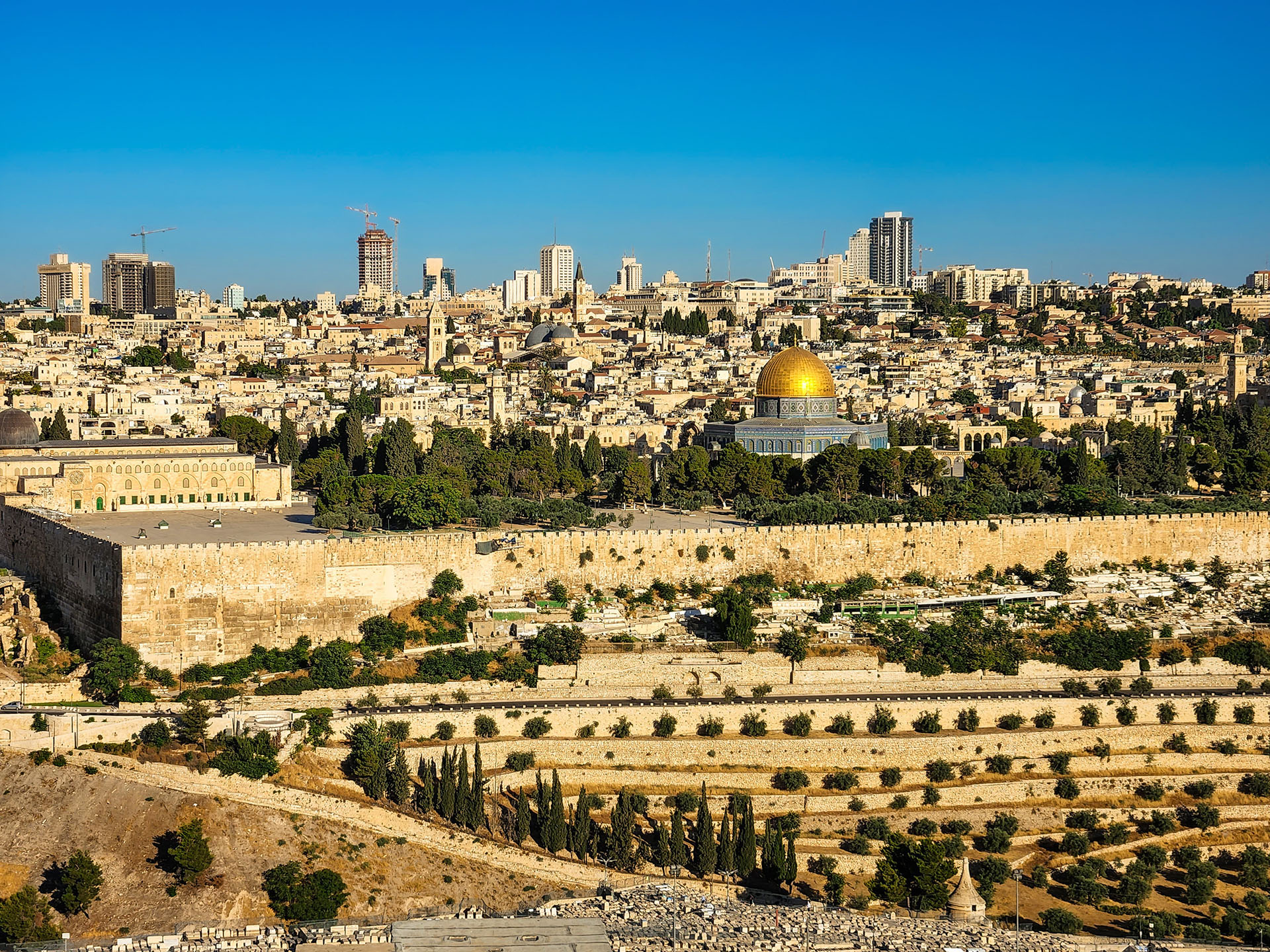
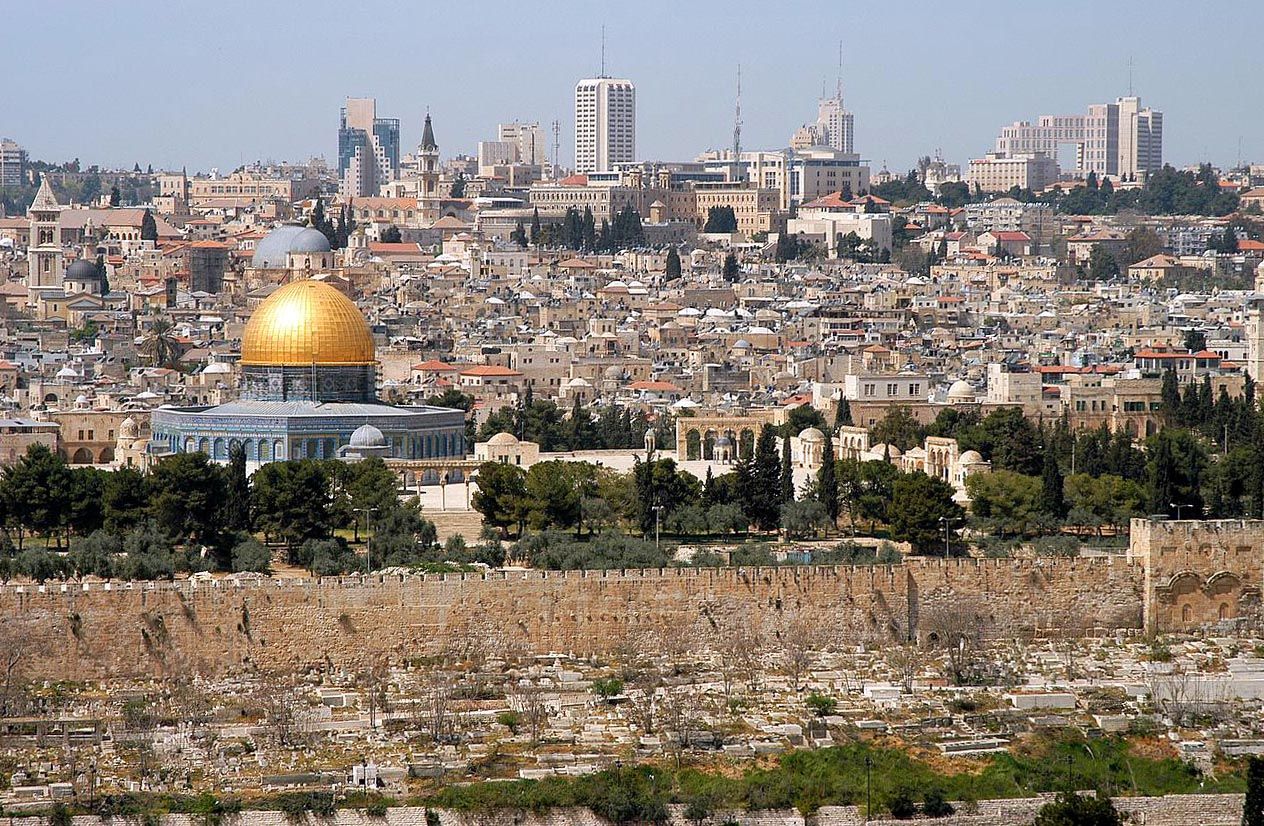
Jerusalem (hebräisch  ירושלים?/i, Jeruschalajim [jeʁuʃa'lajim]; arabisch القدس al-Quds ‚die Heilige‘; altgriechisch Ἱεροσόλυμα Hierosólyma [n. pl.], oder Ἰερουσαλήμ Ierousalḗm [f., indecl.]; lateinisch Hierosolyma [n. pl. oder f. sg.], Hierosolymae [f. pl.], Hierusalem oder Jerusalem [n., indecl.]) ist eine Stadt in den judäischen Bergen zwischen Mittelmeer und Totem Meer mit rund 882.000 Einwohnern.
ירושלים?/i, Jeruschalajim [jeʁuʃa'lajim]; arabisch القدس al-Quds ‚die Heilige‘; altgriechisch Ἱεροσόλυμα Hierosólyma [n. pl.], oder Ἰερουσαλήμ Ierousalḗm [f., indecl.]; lateinisch Hierosolyma [n. pl. oder f. sg.], Hierosolymae [f. pl.], Hierusalem oder Jerusalem [n., indecl.]) ist eine Stadt in den judäischen Bergen zwischen Mittelmeer und Totem Meer mit rund 882.000 Einwohnern.
In Jerusalem begegnen sich viele Kulturen der Antike und Moderne. Die Altstadt ist in das muslimische, jüdische, christliche und armenische Viertel gegliedert und von einer Mauer umgeben.
Der politische Status der Stadt ist international umstritten und Teil des Nahostkonflikts. Jerusalem wurde von Israel, das das gesamte Stadtgebiet kontrolliert, als seine Hauptstadt deklariert. Der Staat Palästina beansprucht Ost-Jerusalem als seine Hauptstadt. In Jerusalem befinden sich der Sitz des Staatspräsidenten, die Knesset und das Oberste Gericht als Teil des politischen Systems Israels, die 1918 gegründete Hebräische Universität sowie die Holocaustgedenkstätte Yad Vashem und der Israel National Cemetery. Ostjerusalem, das bedeutende religiöse Stätten des Judentums, Christentums und des Islam beherbergt, wird von gemäßigteren Palästinenser-Organisationen jedoch als Hauptstadt eines zukünftigen palästinensischen Staates beansprucht, während radikalere Palästinenser-Organisationen die gesamte Stadt als Hauptstadt fordern.
耶路撒冷(希伯来语: יְרוּשָׁלַיִם,拉丁化:Yerushaláyim;阿拉伯语:
יְרוּשָׁלַיִם,拉丁化:Yerushaláyim;阿拉伯语: القُدس,拉丁化:al-Quds,汉译:古都斯或古德斯,意为“神圣的”;唐朝时期的景教徒曾根据叙利亚语“Ūrišlem”译作乌梨师敛[2][3])为以色列和巴勒斯坦境内的一座城市,位于地中海和死海之间,是古代巴勒斯坦中部的全球宗教重镇,也是完整保留人类信仰文明演进史的一个历史城市。耶路撒冷同时是犹太教、基督教和伊斯兰教三大亚伯拉罕宗教(或称“三大天启宗教”)的圣地。自公元前10世纪,所罗门王建成第一圣殿起,耶路撒冷一直是犹太教信仰的中心和最神圣的城市[4],昔日圣殿的遗迹西墙,仍是犹太教最神圣的所在。基督徒也相当重视耶路撒冷,因为根据《圣经》记载,耶稣在这里受难、埋葬、复活、升天。伊斯兰教亦将耶路撒冷列为麦加、麦地那之后的第三圣地,以纪念穆罕默德的夜行登霄[5],并在圣殿山上建造2座清真寺——阿克萨清真寺和圆顶清真寺来纪念这一事件。
القُدس,拉丁化:al-Quds,汉译:古都斯或古德斯,意为“神圣的”;唐朝时期的景教徒曾根据叙利亚语“Ūrišlem”译作乌梨师敛[2][3])为以色列和巴勒斯坦境内的一座城市,位于地中海和死海之间,是古代巴勒斯坦中部的全球宗教重镇,也是完整保留人类信仰文明演进史的一个历史城市。耶路撒冷同时是犹太教、基督教和伊斯兰教三大亚伯拉罕宗教(或称“三大天启宗教”)的圣地。自公元前10世纪,所罗门王建成第一圣殿起,耶路撒冷一直是犹太教信仰的中心和最神圣的城市[4],昔日圣殿的遗迹西墙,仍是犹太教最神圣的所在。基督徒也相当重视耶路撒冷,因为根据《圣经》记载,耶稣在这里受难、埋葬、复活、升天。伊斯兰教亦将耶路撒冷列为麦加、麦地那之后的第三圣地,以纪念穆罕默德的夜行登霄[5],并在圣殿山上建造2座清真寺——阿克萨清真寺和圆顶清真寺来纪念这一事件。
自1967年第三次中东战争之后,以色列控制了全部的耶路撒冷地区,包括西耶路撒冷和东耶路撒冷,以及老城区。以色列和巴勒斯坦都声称耶路撒冷是他们的首都,因为以色列坚称这里是他们主要的政府机构,而巴勒斯坦则称预见这座城市是他们的政权所在地。不过,这两个声称在国际社会上都没有得到广泛的承认,认为该市的最终地位尚未确定,有待以色列和巴勒斯坦双方谈判决定。多数国家都将大使馆设在特拉维夫[6][7]。今天耶路撒冷仍然是以巴冲突的中心。以色列现行政区划上设耶路撒冷区,面积652平方公里,只有一个分区,即耶路撒冷分区。
2006年,耶路撒冷市区面积为126平方公里,人口约724,000人,这两项指标均居以色列和巴勒斯坦各城市之首[8][9][10]。
今天的耶路撒冷,是一个对比强烈的城市,不同文化、不同宗教、不同民族、社会不同阶层,同处一城;城市的东西两部分截然不同,发展水平悬殊。老城雅法门以西的西耶路撒冷(1967年以前属于以色列的市区)是现代以色列的核心地带(如果再继续向西数十公里,就是以特拉维夫为中心的“古什·但”区域),而老城及其东、北、南三面的东耶路撒冷(1967年后以色列占领的争议区域)则以巴勒斯坦人为主。最特别的地方是面积只有1平方公里,被一圈城墙所围绕的耶路撒冷老城[11],其中又分为4个宗教与种族聚居区:犹太区、基督徒区、亚美尼亚区和穆斯林区。耶路撒冷最重要的也引起重大争议的宗教圣地,均位于此处:犹太教的西墙和圣殿山、穆斯林的圆顶清真寺和阿克萨清真寺,以及基督徒的圣墓教堂和苦路。
エルサレムまたはイェルサレムは、イスラエルおよびパレスチナ自治区にある都市。
イスラエルはエルサレムが自国の「首都」であると宣言しているものの、国際連合など国際社会はこれを認めておらず[1][2]、イスラエルの首都はテルアビブであるとみなし[1][2]ている。したがって、イスラエルと国交を持つ諸国も、大使館や領事館はエルサレムでなくテルアビブに置いてきた。ただし、2017年になってアメリカ合衆国のドナルド・トランプ大統領はエルサレムをイスラエルの首都であると明言[1][2]。2018年5月、アメリカ大使館をテルアビブからエルサレムに移転させた[3]。
Jerusalem (/dʒəˈruːsələm/; Hebrew: יְרוּשָׁלַיִם  Yerushaláyim; Arabic: القُدس
Yerushaláyim; Arabic: القُدس  al-Quds)[note 2] is a city in the Middle East, located on a plateau in the Judaean Mountains between the Mediterranean and the Dead Sea. It is one of the oldest cities in the world, and is considered holy to the three major Abrahamic religions—Judaism, Christianity, and Islam. Both Israel and the Palestinian Authority claim Jerusalem as their capital, as Israel maintains its primary governmental institutions there and the State of Palestine ultimately foresees it as its seat of power; however, neither claim is widely recognized internationally.[note 3][8]
al-Quds)[note 2] is a city in the Middle East, located on a plateau in the Judaean Mountains between the Mediterranean and the Dead Sea. It is one of the oldest cities in the world, and is considered holy to the three major Abrahamic religions—Judaism, Christianity, and Islam. Both Israel and the Palestinian Authority claim Jerusalem as their capital, as Israel maintains its primary governmental institutions there and the State of Palestine ultimately foresees it as its seat of power; however, neither claim is widely recognized internationally.[note 3][8]
During its long history, Jerusalem has been destroyed at least twice, besieged 23 times, attacked 52 times, and captured and recaptured 44 times.[9] The part of Jerusalem called the City of David was settled in the 4th millennium BCE.[10] Jerusalem was named as "Urusalim" on ancient Egyptian tablets, probably meaning "City of Shalem" after a Canaanite deity, during the Canaanite period (14th century BCE). During the Israelite period, significant construction activity in Jerusalem began in the 9th century BCE (Iron Age II), and in the 8th century the city developed into the religious and administrative center of the Kingdom of Judah.[11] In 1538, the city walls were rebuilt for a last time around Jerusalem under Suleiman the Magnificent. Today those walls define the Old City, which has been traditionally divided into four quarters—known since the early 19th century as the Armenian, Christian, Jewish, and Muslim Quarters.[12] The Old City became a World Heritage Site in 1981, and is on the List of World Heritage in Danger.[13] Since 1860 Jerusalem has grown far beyond the Old City's boundaries. In 2015, Jerusalem had a population of some 850,000 residents, comprising approximately 200,000 secular Jewish Israelis, 350,000 Haredi Jews and 300,000 Palestinians.[14][note 4] In 2011, the population numbered 801,000, of which Jews comprised 497,000 (62%), Muslims 281,000 (35%), Christians 14,000 (around 2%) and 9,000 (1%) were not classified by religion.[16]
According to the Bible, King David conquered the city from the Jebusites and established it as the capital of the united kingdom of Israel, and his son, King Solomon, commissioned the building of the First Temple.[note 5] These foundational events, straddling the dawn of the 1st millennium BCE, assumed central symbolic importance for the Jewish people.[18][19] The sobriquet of holy city (עיר הקודש, transliterated ‘ir haqodesh) was probably attached to Jerusalem in post-exilic times.[20][21][22] The holiness of Jerusalem in Christianity, conserved in the Septuagint[23] which Christians adopted as their own authority,[24] was reinforced by the New Testament account of Jesus's crucifixion there. In Sunni Islam, Jerusalem is the third-holiest city, after Mecca and Medina.[25][26] In Islamic tradition, in 610 CE it became the first qibla, the focal point for Muslim prayer (salat),[27] and Muhammad made his Night Journey there ten years later, ascending to heaven where he speaks to God, according to the Quran.[28][29] As a result, despite having an area of only 0.9 square kilometres (0.35 sq mi),[30] the Old City is home to many sites of seminal religious importance, among them the Temple Mount with its Western Wall, Dome of the Rock and al-Aqsa Mosque, and the Church of the Holy Sepulchre. Outside the Old City stands the Garden Tomb.
Today, the status of Jerusalem remains one of the core issues in the Israeli–Palestinian conflict. During the 1948 Arab–Israeli War, West Jerusalem was among the areas captured and later annexed by Israel while East Jerusalem, including the Old City, was captured and later annexed by Jordan. Israel captured East Jerusalem from Jordan during the 1967 Six-Day War and subsequently annexed it into Jerusalem, together with additional surrounding territory.[note 6] One of Israel's Basic Laws, the 1980 Jerusalem Law, refers to Jerusalem as the country's undivided capital. All branches of the Israeli government are located in Jerusalem, including the Knesset (Israel's parliament), the residences of the Prime Minister (Beit Aghion) and President (Beit HaNassi), and the Supreme Court. While the international community rejected the annexation as illegal and treats East Jerusalem as Palestinian territory occupied by Israel,[34][35][36][37] Israel has a stronger claim to sovereignty over West Jerusalem.[38][39]
Jérusalem /ʒe.ʁy.za.lɛm/ (ou Salem, également nommée Hiérosolyme ou Solyme en ancien français ; יְרוּשָׁלַיִם Yerushaláyim en hébreu [dénomination israélienne officielle] ; arabe : القدس al Quds ou اورشليم Ûrshalîm [dénomination israélienne officielle en arabe]) est une ville du Proche-Orient que les Israéliens ont érigée en capitale, que les Palestiniens souhaiteraient comme capitale et qui tient une place centrale dans les religions juive, chrétienne et musulmane.
La ville s’étend sur 126 km2 pour une population de 901 300 habitants en 20171. La ville, chef-lieu du district de Jérusalem, est cosmopolite : s'y mêlent de nombreuses religions, peuples, groupes socio-économiques. La partie nommée vieille ville, entourée de remparts, est constituée de deux quartiers à dominante arabe, dits quartier chrétien et quartier musulman, ainsi que d’un quartier à dominante arménienne et d’un quartier à dominante juive.
Gerusalemme (AFI: /ʤeruzaˈlɛmme/[2][3]; in ebraico: יְרוּשָׁלַיִם?, Yerushalayim, Yerushalaim e/o Yerushalaym ascolta[?·info]; in arabo: القُدس, al-Quds, "la (città) santa"[4], sempre in arabo: أُورْشَلِيم, Ūrshalīm, in greco Ιεροσόλυμα, Ierosólyma, in latino Hierosolyma o Ierusalem, per antonomasia è definita "La Città Eterna"[5]), capitale giudaica tra il X e il VI secolo a.C.[6], è la capitale contesa di Israele e città santa nell'Ebraismo, nel Cristianesimo e nell'Islam. Si trova sull'altopiano che separa la costa orientale del Mar Mediterraneo dal Mar Morto, a est di Tel Aviv, a sud di Ramallah, a ovest di Gerico e a nord di Betlemme.
La Città Vecchia e le sue mura, considerate patrimonio dell'umanità dall'UNESCO, racchiudono in meno di un chilometro quadrato molti luoghi di grande significato religioso come il Monte del Tempio, il Muro del pianto, la Basilica del Santo Sepolcro, la Cupola della Roccia e la Moschea al-Aqsa. Nel corso della sua storia Gerusalemme è stata distrutta e ricostruita due volte ed è stata assediata, conquistata e riconquistata in decine di occasioni.
La parte orientale di Gerusalemme è stata occupata[7] dallo Stato di Israele nel 1967, e nel 1980 il parlamento israeliano approvò una legge fondamentale (l'equivalente di un emendamento costituzionale) che proclamava unilateralmente "Gerusalemme, unita e indivisa [...]".[8] Il Consiglio di sicurezza delle Nazioni Unite nella risoluzione 478 ha definito la legge nulla e priva di validità[9], una violazione del diritto internazionale[10] e un serio ostacolo al raggiungimento della pace in Medio Oriente[11][12].
Jerusalén (en hebreo, יְרוּשָׁלַיִם  Yerushaláyim (?·i); en árabe, القـُدْس
Yerushaláyim (?·i); en árabe, القـُدْس  al-Quds (?·i)) es la capital de Israel y su ciudad más grande y poblada, con 865 7004 residentes en un área de 125,1 kilómetros cuadrados.2 Los asentamientos más antiguos en Jerusalén son del V milenio a. C. y es una de las ciudades más antiguas del mundo.5 Jerusalén tiene un profundo significado religioso para el cristianismo, el judaísmo y el islam. Geográficamente, se sitúa en los montes de Judea, entre el mar Mediterráneo y la ribera norte del mar Muerto, y se ha extendido bastante más allá de los límites de la Ciudad Vieja.
al-Quds (?·i)) es la capital de Israel y su ciudad más grande y poblada, con 865 7004 residentes en un área de 125,1 kilómetros cuadrados.2 Los asentamientos más antiguos en Jerusalén son del V milenio a. C. y es una de las ciudades más antiguas del mundo.5 Jerusalén tiene un profundo significado religioso para el cristianismo, el judaísmo y el islam. Geográficamente, se sitúa en los montes de Judea, entre el mar Mediterráneo y la ribera norte del mar Muerto, y se ha extendido bastante más allá de los límites de la Ciudad Vieja.
El estatus de la parte oriental de la ciudad, conquistada en 1967 por Israel, se encuentra disputado, ya que en este sector —referido habitualmente como Jerusalén Este o Jerusalén Oriental, que incluye la Ciudad Vieja— es donde el Estado de Palestina pretende establecer su capital. Israel discute las reclamaciones palestinas y, tras la Guerra de los Seis Días, considera la ciudad como un todo unificado y un mismo municipio, declarándola como su capital "eterna e indivisible" mediante la Ley de Jerusalén en 1980. Esta anexión ha provocado un amplio rechazo en la comunidad internacional, materializado en la resolución 478 del Consejo de Seguridad de la ONU, que la consideró contraria al Derecho Internacional,6 y en señal de protesta por este acto unilateral los Estados miembros de las Naciones Unidas acabaron por trasladar sus embajadas a Tel Aviv, tal como pedía la resolución.
Jerusalén fue habitada por los jebuseos antes de la llegada de las tribus hebreas a Canaán a principios del siglo XIII a. C. Históricamente, y según la tradición, fue la antigua capital del Reino de Israel y del Reino de Judá, y siglos más tarde del reino franco de Jerusalén.7
La Ciudad Vieja de Jerusalén fue declarada Patrimonio de la Humanidad por la Unesco en 1981.
Иерусали́м (ивр. יְרוּשָׁלַיִם Йерушала́(й)им (audio) (инф.), араб. القُدس аль-К̣удс[комм. 1], أورشليم Ӯршалӣм (Ӯрушалӣм)[комм. 2], أورشليم القدس, Ӯршалӣм-аль-К̣удс[комм. 3] (audio) (инф.)) — столица Израиля[3][4][5][6][7], город на Ближнем Востоке. Расположен на плато в Иудейских горах на водоразделе между Средиземным и Мёртвым морями, на высоте 650—840 м над уровнем моря; климат средиземноморский, с жарким, сухим летом и мягкой, влажной зимой. Город является священным для трёх крупнейших авраамических религий — иудаизма, христианства и ислама. Населён представителями множества национальных, этнических и религиозных деноминаций; численность населения Иерусалима (без пригородов) составляет 865 721 жителей.
23 января 1950 года Кнессет (Израильский парламент) провозгласил Иерусалим столицей Государства Израиль[8]; с 1967 года в результате Шестидневной войны Израиль стал контролировать всю территорию города: как Западный Иерусалим, так и Восточный. В 1980 году Кнессет провозгласил Иерусалим единой и неделимой столицей Израиля[3][9]. Израильский суверенитет над восточной частью города[10] и статус всего Иерусалима как столицы Израиля не признаны значительной частью международного сообщества[11][12][13], которое относится к Восточному Иерусалиму как к палестинской территории, оккупированной Израилем[14][15][16][17]. Статус Иерусалима остаётся одной из центральных тем палестино-израильского конфликта.
Иерусалим является одним из древнейших городов мира: первые поселения датируются IV тысячелетием до н. э. В XI веке до н. э. город был занят евреями и провозглашён столицей Израильского царства, а с X века до н. э. — Иудейского. После распада Римской империи Иерусалим отошёл к Византии. С этого момента начинается христианизация города. C захватом в 639 году арабским халифом Умаром ибн Хаттабом город начинает приобретать мусульманский облик. В 1099—1187 и 1229—1244 годах Иерусалим был под властью

 Architecture
Architecture
 Eurovision Song Contest,ESC
Eurovision Song Contest,ESC

 History
History

 International cities
International cities
 European city
European city

 International cities
International cities
 *European Capital of Culture
*European Capital of Culture

 Medieval cities in Europe
Medieval cities in Europe
 Silk road
Silk road
 Turkey
Turkey

 Cities founded by the Romans
Cities founded by the Romans

 World Heritage
World Heritage


Istanbul (türkisch İstanbul, von griechisch εἰς τὴν πόλιν, eis tḕn pólin, „in die Stadt“: siehe unten), früher Konstantinopel, ist die bevölkerungsreichste Stadt der Türkei und deren Zentrum für Kultur, Handel, Finanzen und Medien. Mit rund 14,4 Millionen Einwohnern nahm die Metropolregion 2016 den 15.[5] Platz unter den größten Metropolregionen der Welt ein. Mit jährlich knapp zwölf Millionen Touristen aus dem Ausland ist Istanbul überdies die Stadt mit der achtgrößten Besucherzahl der Welt.[6] Die Stadt liegt am Nordufer des Marmarameeres auf beiden Seiten des Bosporus, also sowohl im europäischen Thrakien als auch im asiatischen Anatolien. Aufgrund ihrer weltweit einzigartigen Transitlage zwischen zwei Kontinenten und zwei Meeresgebieten, dem Schwarzen und dem Mittelmeer, verzeichnet sie einen bedeutenden Schiffsverkehr und verfügt über zwei große Flughäfen sowie zwei zentrale Kopf- und zahlreiche Fernbusbahnhöfe. Das Projekt Marmaray verbindet beide Hälften der Stadt per Eisenbahn und künftig die Kopfbahnhöfe an den Eisenbahnverkehr des jeweils anderen Kontinents. Istanbul ist daher einer der wichtigsten Knotenpunkte für Verkehr und Logistik auf internationaler wie nationaler Ebene.
Im Jahr 660 v. Chr. unter dem Namen Byzantion gegründet, kann die Stadt auf eine 2600-jährige Geschichte zurückblicken. Fast 1600 Jahre lang diente sie nacheinander dem Römischen, dem Byzantinischen und dem Osmanischen Reich als Hauptstadt. Als Sitz des ökumenischen Patriarchen und – bis 1924 – des osmanischen Kalifats war Istanbul zudem jahrhundertelang ein bedeutendes Zentrum des orthodoxen Christentums und des sunnitischen Islams.
Das Stadtbild ist von Bauten der griechisch-römischen Antike, des mittelalterlichen Byzanz sowie der neuzeitlichen und modernen Türkei geprägt. Paläste gehören ebenso dazu wie zahlreiche Moscheen, Cemevleri, Kirchen und Synagogen. Aufgrund ihrer Einzigartigkeit wurde die historische Altstadt von der UNESCO zum Weltkulturerbe erklärt. 2010 war Istanbul Kulturhauptstadt Europas.
伊斯坦布尔(土耳其语:İstanbul [isˈtanbuɫ] ![]() 聆听)是土耳其最大城市,亦是该国的经济、文化和历史中心。它坐落于土耳其西北部的博斯普鲁斯海峡之滨,位于马尔马拉海和黑海之间,横跨欧亚大陆,经济和历史中心位于欧洲一侧,有三分之一人口居住于亚洲一侧[3]。其人口达到1440万,为全欧洲最大的城市群,亦是中东最大和全球第六大城市[2][4]。伊斯坦布尔全市辖区面积5,343平方千米(2,063平方英里),其覆盖范围同伊斯坦布尔省相同,亦是该省的行政中心[c]。亦是世界上唯一横跨两大洲的城市。
聆听)是土耳其最大城市,亦是该国的经济、文化和历史中心。它坐落于土耳其西北部的博斯普鲁斯海峡之滨,位于马尔马拉海和黑海之间,横跨欧亚大陆,经济和历史中心位于欧洲一侧,有三分之一人口居住于亚洲一侧[3]。其人口达到1440万,为全欧洲最大的城市群,亦是中东最大和全球第六大城市[2][4]。伊斯坦布尔全市辖区面积5,343平方千米(2,063平方英里),其覆盖范围同伊斯坦布尔省相同,亦是该省的行政中心[c]。亦是世界上唯一横跨两大洲的城市。
公元前660年左右,该市以“拜占庭”之名建立于萨拉基里奥角,并在此后逐渐发展为历史上最为重要的城市之一。公元330年该市重建为君士坦丁堡([Κωνσταντινούπολις Konstantinoúpolis] 错误:{{lang-xx}}:文本有斜体标记(帮助);拉丁语:Constantinopolis)或新罗马([Νέα Ῥώμη, Nea Romē] 错误:{{lang-xx}}:文本有斜体标记(帮助);拉丁语:Nova Roma),并在此后的近十六个世纪内先后成为罗马帝国(330年–1204年及1261年–1453年)、拉丁帝国(1204年–1261年)和奥斯曼帝国(1453年–1922年)的帝国首都[5]。在罗马和拜占庭帝国时代,它对基督教的发展起到了重要的作用,而在1453年奥斯曼帝国征服该城之后,它成为了伊斯兰教的中心和奥斯曼帝国哈里发的驻地[6]。
伊斯坦布尔是古丝绸之路的途经地[7],也是欧洲和中东的铁路网络之间、黑海和地中海间海路的必经之地,使得伊斯坦布尔的战略地位十分重要,由此也哺育了兼收并蓄的人口和文化,虽然在1923年共和国成立之后这一状况略不如前。在战间期伊斯坦布尔 未能成为新首都,受到忽视,但此后其影响力逐步恢复。自1950年代以来,该市的人口已翻了十倍,来自安那托利亚各地的人口涌入,城市的界限也为此逐渐扩张[8][9]。20世纪末艺术节开始得到兴办,而随着基础设施的改善,复杂的交通网络也由此建立起来。
2012年,在当选欧洲文化之都两年之后,近1160万外国游客造访伊斯坦布尔 ,使其成为世界第五受欢迎的旅游目的地[10]。该市最重要的景点仍是其历史城区,部分被列为联合国教科文组织世界遗产,而位于贝伊奥卢区的天然港金角湾则是其文化和娱乐的中心。伊斯坦布尔还被认为是一个全球城市[11],亦是全球发展速度最快的都市经济区之一[12]。诸多土耳其公司及媒体将总部设于此,全市国内生产总值超过全国的四分之一[13]。伊斯坦布尔希望借助其复苏和快速扩张的契机,在二十年内五次申请举办夏季奥林匹克运动会[14]。
イスタンブール(トルコ語: İstanbul [isˈtanbul]、英語: Istanbul [ˌɪstænˈbuːl]、ラテン語: Constantinopolis コーンスタンティーノポリス、ギリシア語: Κωνσταντινούπολις コーンスタンティヌーポリス /現代ギリシア語 Κωνσταντινούπολι コンスタンディヌーポリ)は、トルコ最大の都市であり、経済・文化・歴史の中心地。トルコ語の発音に準じて「イスタンブル」と表記される場合もある。
Istanbul (UK: /ˌɪstænˈbʊl/, /-ˈbuːl/ or US: /-stɑːn-/ or /ˈɪstənbʊl/;[6][7][8] Turkish: İstanbul [isˈtanbuɫ] ( listen)), historically known as Byzantium and Constantinople, is the most populous city in Turkey and the country's economic, cultural, and historic center. Istanbul is a transcontinental city in Eurasia, straddling the Bosporus strait (which separates Europe and Asia) between the Sea of Marmara and the Black Sea. Its commercial and historical center lies on the European side and about a third of its population lives on the Asian side.[9] The city is the administrative center of the Istanbul Metropolitan Municipality (coterminous with Istanbul Province), both hosting a population of around 15 million residents. [3] Istanbul is one of the world's most populous cities and ranks as the world's 5th-largest city proper and the largest European city. Istanbul is viewed as a bridge between the East and West.
listen)), historically known as Byzantium and Constantinople, is the most populous city in Turkey and the country's economic, cultural, and historic center. Istanbul is a transcontinental city in Eurasia, straddling the Bosporus strait (which separates Europe and Asia) between the Sea of Marmara and the Black Sea. Its commercial and historical center lies on the European side and about a third of its population lives on the Asian side.[9] The city is the administrative center of the Istanbul Metropolitan Municipality (coterminous with Istanbul Province), both hosting a population of around 15 million residents. [3] Istanbul is one of the world's most populous cities and ranks as the world's 5th-largest city proper and the largest European city. Istanbul is viewed as a bridge between the East and West.
Founded under the name of Byzantion (Βυζάντιον) on the Sarayburnu promontory around 660 BCE, the city grew in size and influence, having become one of the most important cities in history. After its reestablishment as Constantinople in 330 CE, it served as an imperial capital for almost 16 centuries, during the Roman/Byzantine (330–1204 and 1261–1453), the Latin (1204–1261), and the Ottoman (1453–1922) empires.[10] It was instrumental in the advancement of Christianity during Roman and Byzantine times, before the Ottomans conquered the city in 1453 CE and transformed it into an Islamic stronghold and the seat of the Ottoman Caliphate.[11]
Istanbul's strategic position on the historic Silk Road,[12] rail networks to Europe and the Middle East, and the only sea route between the Black Sea and the Mediterranean have produced a cosmopolitan populace. While Ankara was chosen instead as the new Turkish capital after the Turkish War of Independence, the city has maintained its prominence in geopolitical and cultural affairs. The population of the city has increased tenfold since the 1950s, as migrants from across Anatolia have moved in and city limits have expanded to accommodate them.[13][14] Arts, music, film, and cultural festivals were established towards the end of the 20th century and continue to be hosted by the city today. Infrastructure improvements have produced a complex transportation network in the city.
Approximately 12.56 million foreign visitors arrived in Istanbul in 2015, five years after it was named a European Capital of Culture, making the city the world's fifth most popular tourist destination.[15] The city's biggest attraction is its historic center, partially listed as a UNESCO World Heritage Site, and its cultural and entertainment hub can be found across the city's natural harbor, the Golden Horn, in the Beyoğlu district. Considered a global city,[16] Istanbul has one of the fastest-growing metropolitan economies in the world.[17] It hosts the headquarters of many Turkish companies and media outlets and accounts for more than a quarter of the country's gross domestic product.[18] Hoping to capitalize on its revitalization and rapid expansion, Istanbul has bid for the Summer Olympics five times in twenty years.[19]
Istanbul ou Istamboul2 (en turc : İstanbul3), appelé officiellement jusqu'en 1930 et historiquement Constantinople, est la plus grande ville et métropole de Turquie et la préfecture de la province homonyme, dont elle occupe environ 50 % de la superficie mais plus de 97 % de la population. Quatre zones historiques de la ville sont inscrites sur la liste du patrimoine mondial de l'Unesco depuis 1985. Istanbul est le principal centre financier, commercial et industriel de la Turquie mais aussi la capitale culturelle du pays. La population de l'ensemble de l'agglomération stambouliote est évaluée à 15 millions d'habitants en 20144,5 ce qui en fait l'une des plus grandes mégapoles du monde. Forte d'un héritage culturel et historique important, la ville cosmopolite est un haut lieu du tourisme.
Située de part et d’autre du détroit du Bosphore — donc à cheval sur deux continents, l’Europe et l’Asie — Istanbul est généralement considérée comme européenne parce que la ville historique est située sur la rive occidentale du détroit.
Elle est la plus grande agglomération du pays avec plus de 15 millions d'habitants et l'une des plus grandes agglomérations d'Europe. Elle constitue aussi le principal pôle économique de la Turquie.
Appelée officiellement İstanbul depuis le 28 mars 1930, elle a porté d'autres noms durant son histoire (encore parfois utilisés selon les contextes) notamment : « Byzance », au moment de sa fondation ; puis « Constantinople » (à partir du 11 mai 330 en l'honneur de l'empereur romain Constantin Ier).
Appelée aussi la « Deuxième Rome », Istanbul appartint d'abord à la Thrace, puis à l’Empire romain dont elle fut la seconde capitale après 395 (devenu l'Empire romain d'orient et appelé au XVIe siècle « byzantin » par Hieronymus Wolf6), ensuite à l’Empire ottoman depuis le 29 mai 1453, et enfin, juste après la chute de celui-ci le 10 août 1920, à la République de Turquie, dont elle fut capitale jusqu'au 13 octobre 1923, lorsque cette fonction administrative fut transférée à Ankara.
Les anciens noms de la ville, Byzance puis Constantinople, témoignent de cette longue histoire. Seules quelques autres grandes villes ont eu trois noms au cours de leur histoire. Du point de vue historique, il est possible de considérer qu'avec Athènes et Rome, Constantinople (Istanbul) est l'une des trois capitales antiques les plus importantes.
Les habitants de la Byzance antique étaient appelés Byzantiotes et ceux de Constantinople, les Constantinopolitains ou les Politains. Par contre, aucun citoyen de l'Empire romain d'orient ne s'est jamais appelé Byzantin : ils se définissaient comme « Romains » et lorsqu'ils sont devenus sujets de l'Empire ottoman, celui-ci les a organisés dans le milliyet de Rum. Les habitants d’Istanbul sont les Stambouliotes ou les Istanbuliotes7.
La « Sublime Porte » ou simplement « la Porte » étaient les expressions qui désignaient le pouvoir politique ottoman s'il s'agissait du gouvernement ou « le Palais » s'il s'agissait du sultan.
Istanbul (in turco İstanbul, pronuncia [istan'buɫ]), storicamente conosciuta come Bisanzio (in greco antico: Βυζάντιον, Byzàntion; in latino: Byzantium), Costantinopoli (in latino: Constantinopolis; in greco antico: Κωνσταντινούπολις, Konstantinoupolis; in turco ottomano قسطنطينيه Kostantîniyye) o Nuova Roma (in latino: Nova Roma; in greco antico: Νέα Ῥώμη, Néa Rṓmē), è la città capoluogo della provincia omonima e il principale centro industriale, finanziario e culturale della Turchia.
Con una popolazione di circa 15 000 000 di abitanti,[2] Istanbul (considerando però anche i quartieri asiatici) è il secondo centro municipale più popoloso d'Europa (sesto nel mondo) davanti a Londra e dietro Mosca.
Istanbul è una megalopoli situata nel nord-ovest del paese, la quale si estende lungo lo stretto del Bosforo, alla cui estremità meridionale si situa il porto naturale del Corno d'Oro, e lungo la sponda settentrionale del Mar di Marmara. La città, divisa dal Bosforo, si estende sia in Europa (Tracia) sia in Asia (Anatolia), risultando l'unica metropoli al mondo appartenente a due continenti. Istanbul è considerata una città globale.
Nel corso della sua lunga storia, la città (chiamata Bisanzio fino al 330, poi Costantinopoli sino al 1453, Istanbul o Costantinopoli sino al 1930, e da allora in poi solo Istanbul) è stata la capitale:
- dell'Impero romano (330-395);
- dell'Impero bizantino (395-1204 e 1261-1453);
- dell'Impero latino (1204-1261);
- dell'Impero ottomano (1453-1922).
Conosciuta anche con l'appellativo di "seconda Roma", è stata fino alla conquista ottomana nel 1453 una tra le più grandi città della cristianità, divenendo in seguito per quasi cinquecento anni la capitale di uno dei più grandi imperi della storia e crocevia di culture. Quando è stata proclamata la Repubblica di Turchia, il 29 ottobre 1923, Istanbul fu considerata ormai troppo vulnerabile, potendo finire sotto tiro delle marine militari che avevano dimostrato bellamente di poter violare gli stretti durante la Prima guerra mondiale, e così Ankara, che in precedenza aveva servito come quartier generale del movimento cittadino turco durante la guerra d'indipendenza turca, è stata scelta come capitale del nuovo Stato turco.
Nel 2010 Istanbul è stata una delle capitali europee della cultura.[3] Sin dal 1985 le aree storiche di Istanbul fanno parte della lista UNESCO dei patrimoni dell'umanità.[4]
Estambul (en turco, İstanbul, [isˈtanbuɫ]), conocida históricamente como Bizancio y, después, Constantinopla, es la ciudad más poblada de Turquía y el centro histórico, cultural y económico del país. Fue sucesivamente capital de Estados soberanos como el Imperio romano, el Imperio romano de Oriente, el Imperio latino y el Imperio otomano hasta 1923 cuando se terminó en la Ocupación de Constantinopla. Es una ciudad transcontinental, ubicada en el estrecho del Bósforo, que separa Europa y Asia, entre el mar de Mármara y el Mar Negro. Dos tercios de la población viven en la parte europea de la ciudad.2 Con más de 15 millones de habitantes, Estambul es una de las ciudades más pobladas del mundo.3 La mayor parte de la población es de religión musulmana, si bien existen minorías de cristianos (68 000) y de judíos (22 000).
Fue fundada con el nombre de Bizancio (Βυζάντιον) en el promontorio de Sarayburnu alrededor del 660 a. C., y su tamaño e influencia crecieron, y se ha convertido en una de las ciudades más importantes de la historia universal. Desde su refundación bajo el nombre de Constantinopla en 330 d. C., Estambul ha sido la capital del Imperio romano-Imperio bizantino (330-1204 y 1261-1453), del Imperio latino (1204-1261) y del Imperio otomano (1453-1922).4 Fue una de las ciudades en las que floreció el primer cristianismo. Durante el período bizantino, la ciudad estaba habitada por cristianos. Tras la caída de Constantinopla ante los otomanos en 1453, la ciudad se fue transformando en una ciudad musulmana y en la sede del califato otomano.5 Tras la caída
Es también la capital administrativa de la provincia de Estambul (de la que cubre 27 distritos)6 en la llamada Rumelia o Tracia oriental. El nombre de İstanbul, usado de forma no oficial desde hacía varios siglos en el país, fue oficializado el 28 de marzo de 1930 en sustitución de Constantinopla. Aunque la capital política y administrativa es Ankara, Estambul sigue siendo una ciudad que tiene un papel fundamental en la industria, el comercio y la cultura de Turquía. Alberga más de una docena de universidades. Es sede del Patriarcado Ecuménico de Constantinopla, cabeza de la Iglesia ortodoxa.
Con el final de la I Guerra Mundial y la derrota del Imperio otomano, el territorio europeo otomano quedó reducido a unas decenas de kilómetros en torno a Estambul. El 13 de octubre de 1923,7 antes de la promulgación del estado turco sucesor, la República de Turquía, el parlamento turco trasladó legalmente la capitalidad a Ankara.
Las zonas históricas de Estambul fueron declaradas Patrimonio de la Humanidad por la Unesco en el año 1985, por sus importantes monumentos y restos históricos.8
Стамбу́л (тур. İstanbul — [isˈtanbuɫ]), также известный как Константинóполь, и в славянских источниках как Царьгрáд — крупнейший город Турции, главный торговый, промышленный и культурный центр, основной порт страны. Расположен на берегах пролива Босфор, разделяющего его на европейскую (основную) и азиатскую части, соединённые мостами и тоннелями. По численности населения первый город в Европе (при учёте населения, проживающего как в собственно европейской, так и в азиатской частях). Бывшая столица Римской, Византийской, Латинской и Османской империй.
В VII веке до нашей эры колонистами, в основном, выходцами из греческого города Мегары, был основан город Византий[3][4][5]. В 330 году римский император Константин I Великий перенёс столицу Римской империи в Византий, которому было дано название Новый Рим, однако это наименование не прижилось, и вскоре столицу стали называть Константинополем — городом Константина[6][7][8][9]. В XIII веке арабы использовали название Истинполин, которое восходит к греческой фразе греч. εἰς τὴν Πόλι(ν) («ис тин пόли(н)», «ис тим бόли(н)») — в город(е)[10]. Отсюда могло произойти современное название[11][12]. Согласно другой версии, оно происходит от Исламбул (город ислама), что, однако, вызывает сомнения в связи с существованием вышеупомянутого названия Истинполин, созвучного современному, ещё до падения Константинополя в 1453 г.[13] Фирман 1760/1 г., который на практике так и не был реализован, в качестве официального устанавливал встречавшееся уже в документах XV в. название Исламбол, то есть наполненный исламом[14][15]. С конца XVIII в. в европейских странах, в том числе в России, в употребление входит искажённая форма: Стамбул. Формально город после его захвата турками и переноса туда столицы империи не переименовывался: для турок он как был, так и оставался Истанбулом (Стамбулом), а для греков — Константинополем.
До 1930 года официальное, международно принятое название города: Константино́поль (с греч. — «Город Константина»; тур. Konstantiniyye), каковое признавалось Великим национальным собранием Турции: подписи его полномочных представителей стоят под Лозаннским договором, текст которого использует исключительно топоним Константинополь[16]. В официальных русских текстах Константинопольского договора 1724 года, Парижского мирного договора 1856 года, Сан-Стефанского мирного договора 1878 года и Берлинского трактата 1878 года используется принятый тогда в России топоним Константинополь. Другое историческое название, до сих пор используемое в титуле Константинопольского патриарха: Но́вый Рим[17] или Второй Рим (
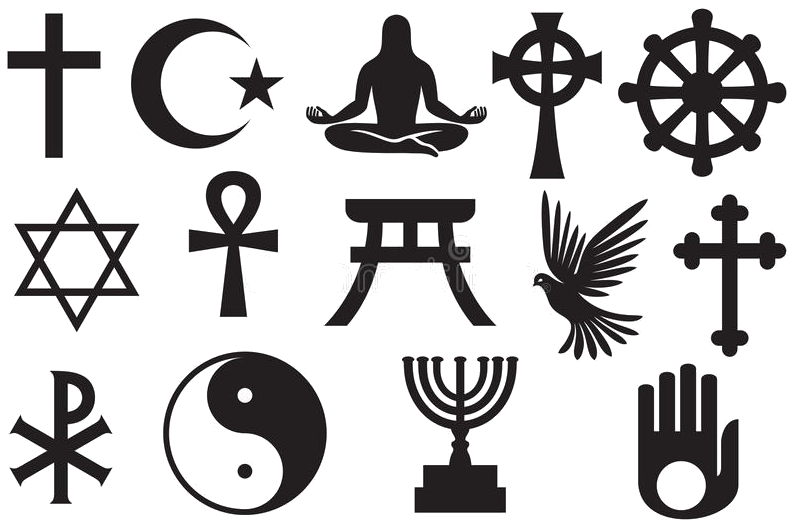 Religion
Religion
